#and then that comic book series got way more popular and mainstream than the original series ever did
Explore tagged Tumblr posts
Text
every time i think about riverdale i get so incredibly fucking mad and i try and make a coherent post about it to get across why its whole concept of existing is So Shit and i can never do it and i delete the post before its even made.
#imagine if fucking. friends or something got a comic book series and there were cults serial killers and incest and they werent even friends#and then that comic book series got way more popular and mainstream than the original series ever did#now swap comic book for netflix series and thats what riverdale did to archie comics. theyre literally a sitcomic.#and jughead was canonically (romance repulsed) aroace.#''b-but aroace people can date and have sex!'' congratulations are you trying for a world record for missing the point or something#PEOPLE WERE SO FUCKING VICIOUS ABOUT HIM. IF THEY MADE KEVIN HET EVERYONE WOULDVE BEEN SO MAD BUT NOT JUGGIE APPARENTLY HE CAN BE HET#AND NOBODY CARED!!!!!!!!!#also ms grundy was like a million years old and was NOT fucking archie in the comics#archie would never.#im sorry. im sorry!#i fucking hate this show so much!#everyhting ive learned about it was against my will!#What do you mean cheryl and jason were incestuous. What.#WHAT DO YOU MEAN HAL COOPER IS A SERIAL KILLER?#WHAT THE FUCK IS A DARK BETTY????????#they even made archies dad thin. nowhere near my top gripe but Why. Why did they do that. What was the POINT#sorry i get so fucking heated about this stupid fucking show#anyway. apparently theres gonna be a new archie comic adaptation soon. its a movie. i hope its fucking good.#i will not be watching it but i hope itll be good.#me tag🍭#thankfully i made the entirety of THIS post in the TAGS so theres no need for me to feel bad about its low quality and delete it#lmk if i need to fucking. tag this as anything btw.
2 notes
·
View notes
Note
OK, I know this will probably be painful, and I may be a bad mutual for asking but...would you be willing to identify what, in your opinion are the bottom five worst Shadow adaptations, and give a detailed breakdown of why they were so lousy?
Oh christ, okay. I don't think you're gonna get as much of a detailed breakdown for these compared to some of the others, because I take more issue with adaptations that do have good qualities but also big or deep problems to talk about.
For example, I can't include Garth Ennis's Shadow in this list because the comic has a lot of strong points to it, despite a deeply, deeply detestable take on The Shadow's character, where as the rest of the Dynamite run doesn't reach neither the lows or highs of his run. Likewise, Andy Helfer's run has a couple or a couple dozen moments every issue that make me want to tear something to shreds in frustration, but it's also at many points a really good comic with great art and some occasionally very inspired writing. Really, I'd just be repeating myself talking about what I hate in those.
But, fine, let's list some of the others.

I think I'm just gonna have to get the elephant in the room out of the way here, and address that I won't be including Si Spurrier's 2017 Dynamite mini in this list, and I think at least some of you might be angry it's not Number 1 by default. I'm doing this because I intend to one day really revisit it, think about it and it's reception and what it was trying to do, and talk about it on it's own, now that it's been 5 years and everyone has moved on and we can maybe talk about it without kneejerk hatred driving everyone nuts (your mileage may vary on how warranted it was).
I'm also not going to be talking about James Patterson's new novel, because I haven't read it. It seems to be considered a forgettable potboiler by mainstream critics and a resounding failure by everyone who likes the character whether they've read the book or not, and frankly I don't have it in me to learn what the fuzz was about anytime soon, I got my hands way too full as is.
And I won't be including the Batman x Shadow crossovers here, because again, they do have a lot of virtues that put them far ahead of some of the really worst Shadow media, and I've talked enough about how badly I think they mangled The Shadow, which is really the big problem I have with them (well, that and Tim Sale blatantly copying a Michael Kaluta cover, that was really shitty). I don't really hate them anymore, I just get tired and frustrated thinking about parts of them, I said my piece as is. Really, my frustration over this comic is what inspired me to start writing about The Shadow here, so I guess in a way I do owe it at least that much.
5: Archie Comics's Shadow
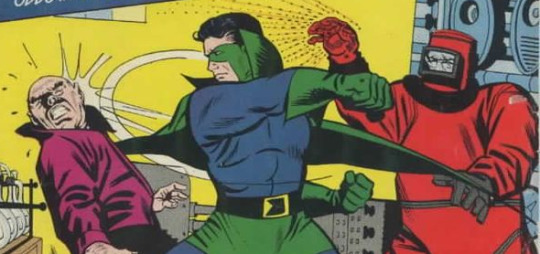
I think some of you might be wondering why this isn't ranked higher, but to be honest, I don't actually harbor any hatred towards this. I mean, I have to include it, but I find it kinda silly that some people even today actually care about the existence of this comic enough to hate it.
For fans back then? Oh yeah, obviously, but this dropped to such instantaneous backlash that it never really got to live past 6 issues. Really, everything wrong about it can be understood immediately from the covers, and I've actually read the comic in it's entirety to see if there was anything worth taking. I found only a couple of things of note but, no, this really is just a painfully mediocre superhero comic that happens to have a couple of Shadow names in it. If anything, it gets too much credit.
The actual contents of what it is are never going to justify it's reputation, but the existence of it and the disproportionate response to it is the funniest and most enduring legacy it could ever ask for. This whole comic is The Shadow's version of Spongebob's embarassing Christmas photo.
4: David Liss's The Shadow Now

This is another "The Shadow as an immortal in modern times" comic and I think you may have noticed the pattern with those by now. I may revisit this eventually and I do have some moments from it saved for reference, but overall: It sucks, and it doesn't even suck in a way that lets me talk much about it, it's a diet version of Chaykin's Shadow. If Archie's Shadow is a generic mediocre superhero comic wearing The Shadow's name, this is a generic crime story playing beats from movie. The Shadow is an asshole and not even a grandiose or sinister one, he just feels like a sleazy douche in a costume. The art is a 50/50 coin toss between appropriately moody and "Google images with a filter on them", I don't remember anything about the plot other than Khan had a bomb again and he had a daughter, and there were new versions of the agents and the Harry stand-in turned evil and Lamont shacked up with Margo's descendant which, uh, no. I don't really hate this but I really have nothing nice to say about this comic other than Colton Worley's art is nice sometimes. I can't really muster anything else to say here.
3: Invisible Avenger
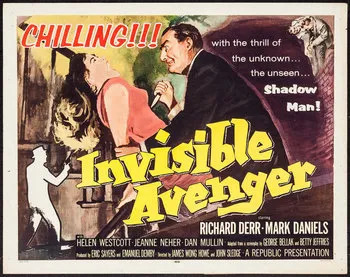
ZZZZZZZZZZZZZZZZZZZZZZZZZZZZZZZZZZZZZZZZZZZZZZZZZZZZZZZZZZZZZZZZZZZZZZZZZZZZZZZZZZZZZZZZZZZZZZZZZZZZZZZZZZZZZZZZZZZZZZZZZZZZZZZZZZZZZZZZZZZZZZZZZZZZZZZZZ
ZZZZZZZZZZZZ
ZZZZZZZZZZ...
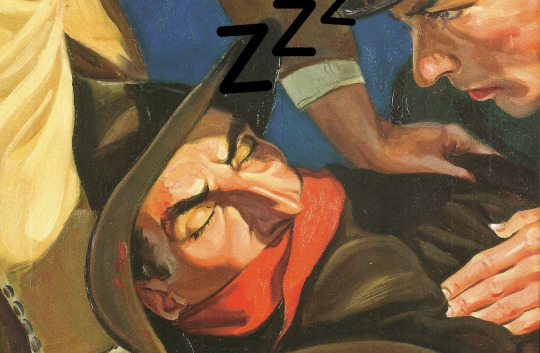
...uuh, wha-
Yeah, I remember nothing about this one other than it's painfully boring and nothing about it, nothing at all, works in the slightest and I drift off to sleep even now trying to give this a rewatch. To be honest pretty much every other Shadow serial not starred by Victor Jory sucks and I don't really have anything to say about them, this one is just the worst of the lot. I dearly wish there was a good Shadow tv series but, if it was going to be like this pilot? Good riddance.
2: Harlan Ellison's The New York Review of Bird

This isn't really a Shadow story as much as it's a Harlan Ellison story that happens to feature The Shadow, but man am I glad that Ellison's "Dragon Shadows" was canned, because holy shit what a goddamn nightmare Harlan Ellison writing The Shadow for real could have been, going purely by the one time he ever touched the character. New York Review of Bird is a purely farcical parody story that wears real, real thin even before "Uncle Kent" shows up, and we get to see in it what is by far the most detestable and irredeemable take on The Shadow ever put on print, and not even in a critique or deconstructive way or anything that could be remotely worth discussing.
I don't hold any particular affection for Harlan Ellison and his writing (despite liking some of it) and I've come to notice the major red flag that is finding someone who looks up to Harlan Ellison in any capacity as a person, and this story in particular really feels like Ellison aggressively trying to channel his jackass tendencies through every line, just him being nasty because he built a personal brand on being nasty. The only reason this isn't Number One is because it's a very short story that saw zero influence or reputation, and thus it only exists as a brief mention in The Shadow wiki, and a brief mention is all it really calls for.
1: Howard Chaykin's Blood & Judgment
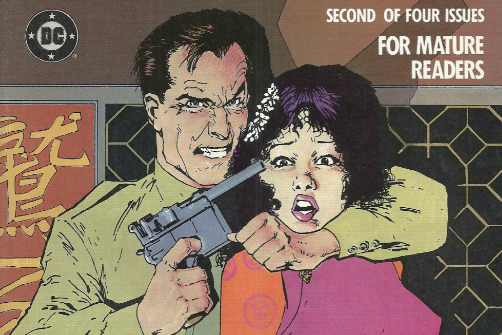
I'm guessing most of you already knew this one was in the top spot before I started writing.
I would actually rather not write a big piece on Blood & Judgment, because I think (or at least I hope) it's influence on The Shadow has waned a lot over the years and I would prefer to draw it the least amount of attention possible, but if I HAVE to talk about this, I guess I'd rather just vomit this out of my circuits now instead of giving it it's own post.
I would prefer to use a less unpleasant image on my blog, but if I'm going to talk about this comic, there's no image to better convey it than this drawing of macho asshole Cranston holding a sexualized mannequin at gunpoint. By leaps and bounds, Blood & Judgment is the most misogynistic Shadow story I've ever read. It's ironic that Chaykin justified the rampant misogyny he gave The Shadow with the idea that this is just a man from the 30s would act like, when he admits in the same breath that he never even touched the stories, and he wrote a story more sexist and demeaning to it's female characters than anything, literally anything, written in the Shadow pulps. It's almost impressive even.
I'll paste some segments from Randy Raynaldo's review
In Flagg, he intended to present his own point of view on American society while keeping his work tongue in cheek and acessible. But this vision dimmed, and Flagg had become a vehicle by which Chaykin could play out fetishes and portray gratuitous and stylish violence.
In The Shadow, stripped of the political and social veneer which was supposed to make Flagg unique, Chaykin's sensibilities and excesses become disturbingly apparent. For all of his liberal posturing, Chaykin's work demonstrates zero difference from the same kind of mentality exploited and made popular by similarly violent popular culture icons like Dirty Harry and Death Wish.
More than half a dozen individuals are indiscriminately and violently murdered in the first issue. Although the victims are characters who played major roles in the myth of The Shadow, we feel little sympathy for them, even for those of us who knew these characters at the outset. Who dies is unimportant, it's how they die that is the fascination.
Chaykin uses sexual decadence as a means by which to establish villains, and undercuts this device by making the protagonists as promiscuous as the villains. For all of Chaykin's seemingly liberal leanings, he demonstrates very little sensitivity in his portrayal of women.
Because everything works on rules of three, this comic also follows the pattern with other works mentioned here, as this isn't Howard Chaykin writing The Shadow: it's The Shadow reimagined as a Howard Chaykin character. He looks and acts exactly like Reuben Flagg and the typical macho protagonist of Chaykin's other works, he's a cynical sleaze with an entirely new origin who half-assedly dons a garb to machine gun people, and I already wrote a separate piece on why the machineguns are kind of emblematic of everything wrong with this take.
I understand that Chaykin has, or used to have, a big following of sorts, and I've tried to wrap my head around this for years, but I genuinely still don't get why Shadow fans stomach this comic unless they happen to be Chaykin fans first and foremost, I really don't. Everything, fucking everything Shadow fans hate about modern depictions of the character can be traced right back to this. The parts that stuck and changed the character for the worse, like him being defined as an immortal, bloodthirsty warmonger who got all his skills and powers from a magic city in Tibet, or Lamont Cranston being a coward who fears and hates the Shadow, or his agents being expendable slaves, stuff that has been ingrained into the mythos through this and the Alec Baldwin movie and other comics, to the point that people now think of it as the norm, that it's the baseline of what The Shadow is, and I hate it, I genuinely fucking hate it,
I hate it so much that it's a big part of the reason why I created this blog and why I want so badly to get to write The Shadow, because I plainly couldn't stand not having ways to tell people that this is all wrong, that this is actively shooting down the character's odds for success, and that they are missing out on something really great, because the well has been tainted with garbage that won't go away and everytime I read the words Shambala in a Shadow comic, even an otherwise good or great one, I get just a wee bit cross.
The only semi-redeeming aspects I can think of for this comic is one or two cool moments, like when The Shadow hijacks a concert using his Devil's Whisper or when he tames dogs with a stare. Just breadcrumbs of "not garbage" amidst an ocean of anything but. I hate that talking about why I hate this comic in-length can almost feel like I'm still enticing people to check it out of curiosity, but if you wanna do that, fine, just know this: The worst part of Blood & Judgment, even if you don't care at all about what it did to The Shadow, is that it's boring.
It is a deeply boring comic. If you like Howard Chaykin to begin with, you'll probably like this okay (although even Chaykin fans told me that this is his weakest work and that even he seems to agree). If you don't, I plain don't see what you could get out of this.
The comic itself is just nothing. It's the comic book equivalent of a pre-schooler trying to get a reaction by swearing. It has nothing whatsoever other than half-assed attempts at shock value. The plot isn't there, the ideas are stale, the dialogue is needlessly oblique and comprised entirely of unfinished sentences, interrupted conversations and one-liners without build-up. The characters are all unlikable and uninteresting stooges with no personality, or joyless cartoons. There's no heart or emotion or logic, and it isn't even funny enough to succeed as just an outrageous exercise in 80s excess. There's nothing in here.
I get "why" it was popular enough at the time, a rising star creator penning a modern revival of an old character based on controversy that pissed off the old fans, it's an old story that still gets repeated today. But manufactured controversy is not a replacement for storytelling and it rarely ever exists to benefit the people who actually want to enjoy the stories, it only benefits those for the crude benefit of those who want to sell you something out of the controversy.
I guess they got their money's worth back then.
------------------------------------------------
Phew, okay, I did it, I finally vomited out a piece on Blood & Judgment and some others, allright, let's put this piece of negativity behind us now.
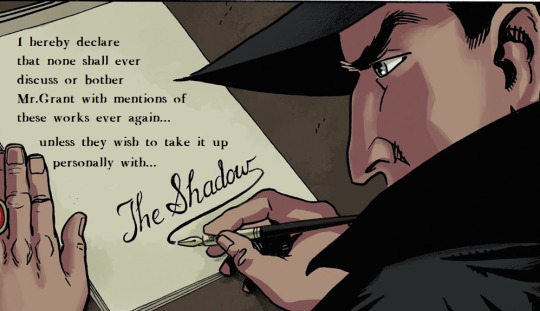
29 notes
·
View notes
Text
Bert Williams

Bert Williams (November 12, 1874 – March 4, 1922) was a Bahamian-born American entertainer, one of the pre-eminent entertainers of the Vaudeville era and one of the most popular comedians for all audiences of his time. He is credited as being the first black man to have the leading role in a film: Darktown Jubilee in 1914.[2]
He was by far the best-selling black recording artist before 1920. In 1918, the New York Dramatic Mirror called Williams "one of the great comedians of the world."
Williams was a key figure in the development of African-American entertainment. In an age when racial inequality and stereotyping were commonplace, he became the first black American to take a lead role on the Broadway stage, and did much to push back racial barriers during his three-decade-long career. Fellow vaudevillian W. C. Fields, who appeared in productions with Williams, described him as "the funniest man I ever saw—and the saddest man I ever knew."
Williams was born in Nassau, The Bahamas, on November 12, 1874, to Frederick Williams Jr. and his wife Julia. At the age of 11, Bert permanently emigrated with his parents, moving to Florida in the United States. The family soon moved to Riverside, California, where he graduated from Riverside High School in 1892. In 1893, while still a teenager, he joined different West Coast minstrel shows, including Martin and Selig's Mastodon Minstrels in San Francisco, where he first met his future professional partner, George Walker.
He and Walker performed song-and-dance numbers, comic dialogues and skits, and humorous songs. They fell into stereotypical vaudevillian roles: originally Williams portrayed a slick conniver, while Walker played the "dumb coon" victim of Williams' schemes. But they soon discovered that they got a better reaction by switching roles and subverting expectations. The sharp-featured and slender Walker eventually developed a persona as a strutting dandy, while the stocky Williams played the languorous oaf. Despite his thickset physique, Williams was a master of body language and physical "stage business." A New York Times reviewer wrote: "He holds a face for minutes at a time, seemingly, and when he alters it, bring[s] a laugh by the least movement."
In late 1896, the pair were added to The Gold Bug, a struggling musical. The show did not survive, but Williams & Walker got good reviews, and were able to secure higher profile bookings. They headlined the Koster and Bial's vaudeville house for 36 weeks in 1896–97, where their spirited version of the cakewalk helped popularize the dance. The pair performed in burnt-cork blackface, as was customary at the time, billing themselves as "Two Real Coons" to distinguish their act from the many white minstrels also performing in blackface. Williams also made his first recordings in 1896, but none are known to survive. They participated in a "Benefit for New York's Poor" held on February 9, 1897 at the Metropolitan Opera House, their only appearance at that theater.
While playing off the "coon" formula, Williams & Walker's act and demeanor subtly undermined it as well. Camille Forbes wrote, "They called into question the possible realness of blackface performers who only emphasized their artificiality by recourse to burnt cork; after all, Williams did not really need the burnt cork to be black," despite his lighter skin complexion. He would pull on a wig full of kinky hair in order to help conceal his wavy hair. Terry Waldo also noted the layered irony in their cakewalk routine, which presented them as mainstream blacks performing a dance in a way that lampooned whites who'd mocked a black dance that originally satirized plantation whites' ostentatiously fussy mannerisms. The pair also made sure to present themselves as immaculately groomed and classily dressed in their publicity photos, which were used for advertising and on the covers of sheet music promoting their songs. In this way, they drew a contrast between their real-life comportment and the comical characters they portrayed onstage. However, this aspect of their act was ambiguous enough that some black newspapers still criticized the duo for failing to uplift the dignity of their race.
In 1899, Williams surprised his partner George Walker and his family when he announced he had recently married Charlotte ("Lottie") Thompson, a singer with whom he had worked professionally, in a very private ceremony. Lottie was a widow eight years Bert's senior. Thus, the match seemed odd to some who knew the gregarious and constantly traveling Williams, but all who knew them considered them a uniquely happy couple, and the union lasted until his death. The Williamses never had children biologically, but they adopted and reared three of Lottie's nieces. They also frequently sheltered orphans and foster children in their homes.
Williams & Walker appeared in a succession of shows, including A Senegambian Carnival, A Lucky Coon, and The Policy Players. Their stars were on the ascent, but they still faced vivid reminders of the limits placed on them by white society. In August 1900, in New York City, hysterical rumors of a white detective having been shot by a black man erupted into an uncontained riot. Unaware of the street violence, Williams & Walker left their theater after a performance and parted ways. Williams headed off in a fortunate direction, but Walker was yanked from a streetcar by a white mob and was beaten.
The duo's international success established them as the most visible black performers in the world. They hoped to parlay this renown into a new, more elaborate and costly stage production, to be shown in the top-flight theaters. Williams and Walker's management team balked at the expense of this project, then sued the pair to prevent them from securing outside investors or representation. Filings in the suit revealed that each member of the team had earned approximately $120,000 from 1902 to 1904, or $3.5 million apiece in 2019 dollars. The lawsuit was unsuccessful, and Williams and Walker accepted an offer from Hammerstein's Victoria Theatre, the premiere vaudeville house in New York. A white Southern monologist objected to the integrated bill, but the show went ahead with Williams and Walker and without the objector.
In February 1906, Abyssinia, with a score co-written by Williams, premiered at the Majestic Theater. The show, which included live camels, was another smash. Aspects of the production continued the duo's cagey steps toward greater creative pride and freedom for black performers. The nation of Abyssinia (now Ethiopia) was the only African nation to remain sovereign during European colonization, repelling Italy's attempts at control in 1896. The show also included inklings of a love story, something that had never been tolerated in a black stage production before. Walker played a Kansas tourist while his wife, Aida, portrayed an Abyssinian princess. A scene between the two of them, while comic, presented Walker as a nervous suitor.
While the show was praised, many white critics were uncomfortable or uncertain about its cast's ambitions. One critic declared that audiences "do not care to see their own ways copied when they can have the real thing better done by white people," while the New York Evening Post thought the score "is at times too elaborate for them and a return to the plantation melodies would be a great improvement upon the 'grand opera' type, for which they are not suited either by temperament or by education." The Chicago Tribune remarked, disapprovingly, "there is hardly a trace of negroism in the play." George Walker was unbowed, telling the Toledo Bee, "It's all rot, this slapstick bandanna handkerchief bladder in the face act, with which negro acting is associated. It ought to die out and we are trying to kill it." Though the flashier Walker rarely had qualms about opposing the racial prejudice and limitations of the day, the more introspective and brooding Williams internalized his feelings.
In 1908, while starring in the successful Broadway production Bandanna Land, Williams and Walker were asked to appear at a charity benefit by George M. Cohan. Walter C. Kelly, a prominent monologist, protested and encouraged the other acts to withdraw from the show rather than appear alongside black performers; only two of the acts joined Kelly's boycott.
Bandanna Land continued the duo's series of hits and introduced a tour de force sketch that soon Williams made famous: his pantomime poker game. In total silence, Williams acted out a hand of poker, with only his facial expressions and body language conveying the dealer's up-and-down emotions as he considered his hand, reacted to the unseen actions of his invisible opponents, and weighed the pros and cons of raising or calling the bet. It later became a standard routine in his solo stage act, and was recorded on film by Biograph Studios in 1916.
Walker was in ill health by this point due to syphilis, which was then incurable. In January 1909 he suffered a stroke onstage while singing, and was forced to drop out of Bandanna Land the following month. The famous pair never performed in public again, and Walker died less than two years later. Walker had been the businessman and public spokesman for the duo. His absence left Williams professionally adrift.
After 16 years as half of a duo, Williams needed to reestablish himself as a solo act. In May 1909 he returned to Hammerstein's Victoria Theater and the high-class vaudeville circuit. His new act consisted of several songs, comic monologues in dialect, and a concluding dance. He received top billing and a high salary, but the White Rats of America, an organization of vaudevillians opposed to encroachments from blacks and women, intimidated the theater managers into reducing Williams' billing. The brash Walker would have resisted such an insult to his star status, but the more reserved Williams did not protest. Allies were few; big-time vaudeville managers were fearful of attracting a disproportionate number of black audience members and thus allowed only one black act per bill. Due to his ethnicity, Williams typically was forced to travel, eat and lodge separately from the rest of his fellow performers, increasing his sense of isolation following the loss of Walker.
In 1910, Booker T. Washington wrote of Williams: "He has done more for our race than I have. He has smiled his way into people's hearts; I have been obliged to fight my way." Gene Buck, who had discovered W. C. Fields in vaudeville and hired him for the Follies, wrote to a friend on the occasion of Fields' death: "Next to Bert Williams, Bill [Fields] was the greatest comic that ever lived."
Williams' stage career lagged after his final Follies appearance in 1919. His name was enough to open a show, but they had shorter, less profitable runs. In December 1921, Under the Bamboo Tree opened, to middling results. Williams still got good reviews, but the show did not. Williams developed pneumonia, but did not want to miss performances, knowing that he was the only thing keeping an otherwise moribund musical alive at the box office. However, Williams also emotionally suffered from the racial politics of the era, and did not feel fully accepted. He experienced almost chronic depression in his later years, coupled with alcoholism and insomnia.
On February 27, 1922, Williams collapsed during a performance in Detroit, Michigan, which the audience initially thought was a comic bit. Helped to his dressing room, Williams quipped, "That's a nice way to die. They was laughing when I made my last exit." He returned to New York, but his health worsened. He died at his home, 2309 Seventh Avenue in Manhattan, New York City on March 4, 1922 at the age of 47. Few had suspected that he was sick, and news of his death came as a public shock. More than 5,000 fans filed past his casket, and thousands more were turned away. A private service was held at the Masonic Lodge in Manhattan, where Williams broke his last barrier. He was the first black American to be so honored by the all-white Grand Lodge. When the Masons opened their doors for a public service, nearly 2,000 mourners of both races were admitted. Williams was buried in Woodlawn Cemetery in The Bronx, New York City.
https://en.wikipedia.org/wiki/Bert_Williams
74 notes
·
View notes
Text
so the adventure zone was recently picked up for an animated series.
hooray! good for the mcelroys. i’m glad they’re getting more mainstream. i’m glad they’re able to financially support themselves and their family with this fame. i’m glad taz has a chance to get new fans! i’m glad fans get to see some of the most iconic balance moments animated!
i also think it’s a monstrously bad idea.
(this is long and this may seem pretty mean and radical, but please read before fighting me on any of this. also this isn’t an attack on anyone that’s excited for any of this adaptation stuff! it’s good to be excited for this success. but also there are some things to consider.)
okay! so, up front: i think the taz animated series is a bad idea. i also think, retrospectively, the graphic novel was a bad idea. also i think the vox machina origins comic and animated series are bad ideas.
okay so this is going to get. a little long and rambly. but i’ll try to keep it organized.
1. TAZ Graphic Novel
now, when the first book was announced, i was excited! i’m still excited for the next one. aside from the blue/green elves thing, which i won’t ever forgive, carey’s doing a great job adapting this piece. i’ve met her before and she generally does know what she’s talking about, comics-wise, so i do think she was a very good choice to pick up the graphic novel
there are still problems! oh, are there problems. for example, i think everyone in the novel is characterized in a wildly different way than the original podcast. i can also get into this later if people want to hear about it, but! people have picked at that one before.
out of all the adaptations i’m going to talk about, this one is the best!
2. Vox Machina Origins
alright. context. i don’t know if i’ve said this on this platform before, but i’m a comic book artist (my big project is coming out this year, i’ll announce it on here, that’s not the point of this rant). and i bought the comic on a whim! it was a christmas present to me.
now, i know a lot of people read it and enjoyed it! and that’s great. i’m happy you got joy out of the book, really. i think every piece of art means something to someone, no matter its popularity or quality. and it did well, as far as i know! so that’s very good for CR and its fans. also i think pike is hot.
all that aside, the comic does suck very much.
i could go into a deep analysis of it (i CAN, if enough people actually want to see that?) but tldr: it’s rushed, both in production and story pacing. the character art is good! but you can see the shortcuts. the lettering is. awful. (that’s mostly a problem of modern comics in general though)
and i’m not blaming anyone at CR for these problems! really, if dark horse wants to pick up an adaptation, any writers from the original project should be heavily coached on how to write for a new medium. i’m not blaming matthew for that one! i know from firsthand experience that comic writing is different from anything else you will ever write, and is so difficult to get correct. as far as i knew, matt had never written for comics before! it would be really nice if he had some more resources to get this done right.
but that would cost money.
and that brings me to--
3. The Vox Machina Animated Series
wow! look at all that money everyone raised for this animated series. this animated series that the creators said they were raising money for so they could do it independently. hope they don’t go pitch it to a bigger company to do m--
and, it was sold to Amazon.
like, it didn’t even take them a month.
and in the current climate of how animation is bought and sold, i understand the need to sell it to a streaming service! you need a platform to let people view it, and youtube is in the shitter with its copyright stuff lately, so it makes sense to go private to keep your show safe. and then, you can maybe make more episodes after you run out of kickstarter money. i don’t hate that idea!
but amazon...hm.
it’s probably fine, right?
3.5. Wendy’s
haha remember when CR got sponsored by wendy’s and played their shitty rpg that wasn’t even balanced properly and then people called them out for it and then they donated all the money to a cause wendy’s hated to make up for it (good on them!) and then deleted the VOD off youtube? gosh, good times.
money makes people do strange things.
4. TAZ Animated Series
so, peacock has taz. sure! that works. it’s not the best company to pick this up, but it’s also not the worst. i’ll take that. i looked up the guy that’s slated to direct this and i don’t think he’s ever directed an animated show? which isn’t great, but that’s not what i’m worried about.
you know what i am worried about?
these big corporations don’t care if these adaptations are any good. they just want to cram as many iconic moments from your quirky, small-owned d&d podcasts to get you to give them money. for the mcelroys and the CR crew, it’s a passion project. to amazon and dark horse and NBC, it’s an investment.
you’re going to buy the book to see vax and vex bicker!
you’re going to tune in to watch magic brian!
you’re going to want to read pike meeting scanlan, of course!
you want to see “phantasmal and resplendent” animated!
here’s the other thing. when i see people talking about the animated series, this is exactly what they’re looking for.
“i want to watch merle dirty talk the plants on screen!”
“i want to see the taakitz date!”
“i want to see magnus do the julia scene...”
now, this mindset isn’t bad! no, if you’ve been thinking this, that’s okay! it’s really not my personal thought (i think adaptations are best when they DO change things in the story to better fit the new medium they’re going on) but it’s fine.
we might get tom arnold!
but you know what we’re not going to get?
we’re not going to get apologies and revisions when something goes wrong. we’re not going to get cute extra scenes because that would require more writing. we’re not going to get the same respect for the LGBTQ+ characters on screen. the people working on this show will not get paid what they’re worth.
we’re probably not going to get a trans actress for lup.
we’re probably going to see less of carey and killain.
we’re probably going to see even fewer black and brown characters than we already have.
why’s that?
because it’s a money project. they’re doing it for money. and they want to reach as wide of an audience as possible, right? “really, we need to cut back on this gay stuff so that straight people aren’t uncomfortable. we need to stay more moderate on this project so that more people will watch it!”
(that was sarcasm)
now, NBC has had some good shows! but that’s really the responsibility of their individual writers, and it’s usually in spite of the companies they work for, and not because of them.
once an author or an artist sells their project to a company for adaptation, they often lose all rights to input from it. i don’t know what the mcelroy’s or CR’s contracts are, but unless they have better lawyers than NBC or amazon.....they probably got shafted somehow.
it’s not a mcelroy product. it’s not a CR product. don’t pretend like it is.
you can enjoy it, but please be cautious. this is just a pile of money in a cheap taako costume. don’t trust it as much as you would the podcast.
tldr: individual creators are always going to make more genuine content than corporations that buy those creations for larger adaptations. it’s okay to enjoy these adaptations, but please be aware that it’s not going to have the same spirit or heart as the boys talking about masturbation on a filler show they did quickly so justin could go support his wife in labor.
1K notes
·
View notes
Text
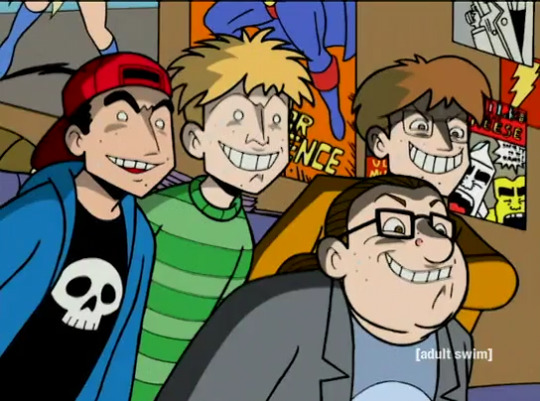
Welcome to Eltingville: “Bring Me the Head of Boba Fett” | February 26, 2002 - 4:00 AM | Special
Lots of personal baggage to unpack on this one, so please forgive what will surely read as a personal blog post:
Welcome to Eltingville was the first of Adult Swim’s “failed pilots” which aired as a special. It’s failed in the sense that it didn’t get picked up, presumably for being too expensive. It originally aired as a stealth premiere at 4:00AM on Monday night/Tuesday morning, I’m assuming to fulfill a contractual agreement. It had a “for real” advertised premiere on March 3rd, which is what you’ll find cited on various web sources.
It’s time I confess something here: I didn’t like this show the first time around. The early 2000s was a time when “nerd” culture was being clumsily embraced as a novelty. People suddenly started gravitating towards movies and shows about nerds, all usually portrayed in a cutesy and toothless way. Yes, I was too blinded by my own shunning of this trend to realize that this show was the antithesis of that. And yes, I was unfamiliar with the original comics that these were based on, which probably would have blown my mind if I was aware of them in the 90s. Hell, I would have shunned a Dan Pussey cartoon if I weren’t already in love with Dan Clowes comics.
Was it all overblown in my own head? Well, I can only come up with two examples to illustrate my distaste for “nerds stuff”, so yes, it probably was. First, Super Nerds, which was a 2000 pilot staring Patton Oswalt and Brian Posehn as two nerds who worked at a comic book store. I was sold on it by a friend as being the best sitcom he’d ever seen in his life. I also loved Patton Oswalt and Brian Posehn. But good lord, did I hate that show, a lot. The more mainstream example is the Comedy Central show Beat the Geeks, a trivia game show where normal people compete against experts (or geeks) in certain fields (usually popular culture related). The promos showed the geeks in question strutting around and ironically looking cool and triumphant. These promos were so profoundly unfunny to me that I found it insane and offensive when the whole “geek” angle seemed to hook other members of my family. “there’s this game show where guys have to compete... against GEEKS! haw haw!” I can still hear my dad’s voice echo in my head. I still hate it!
I also didn’t relate to traditionally geeky things, like superhero comics, science fiction/fantasy, etc. I hated all of that stuff, and I still mostly do (did I go through a multiple year phase in my early 30s where I tried to force myself to like super hero comics? Yes! I did! It didn’t particularly take). I am absolutely a comedy nerd, though, which is a much MUCH lonelier pursuit.
Hell, the comedy nerd isn’t even an archetype on TV shows; Freaks and Geeks came fairly close, but those guys also liked sci-fi and role-playing games and stuff. Square Pegs also had a comedy nerd character. There was that episode of Undeclared where Martin Starr is boring the rest of the cast by trying to explain that Freddy Got Fingered was an intelligent anti-comedy (the closest I’ve ever seen myself be portrayed on screen). All of these shows lasted one season, making the comedy nerd character the most potent poison since (NOTE TO SELF: google FAMOUS FICTIONAL POISONS, please pick a cool non-nerdy one [leave note-to-self in write-up if coming up with one is impossible {will come off as intentional meta-humor (everyone will love this)}]).
Welcome to Eltingville is about four friends who have created The Eltingville Comc Book, Science-Fiction, Fantasy, Horror, and Role-Playing Club. They’ve presumably been together for a long time when this episode starts, and we see the dynamics of the club right away, the main thing being the constant petty bickering that quickly becomes violent and destructive. They’re all gigantic jerks who presumably only hang with each other because nobody else will. The main conflict of this show has to do with Bill, the Stan of the group, and Josh, the Cartman, who eventually come to blows over a rare Boba Fett doll-- I mean, figure. The first half of the show is a pretty good introduction to the would-be-series, with the guys playing a D&D style role-playing game and then getting into a full-fledged fist-fight over a VHS compilation of nude scenes that turns out to be a recording of the Hair Bear Bunch. The second half is an adaptation of the comic story “Bring Me The Head of Boba Fett”. Had I thought of it I might have read the entire run of Eltingville Club comics before reviewing this. Unfortunately it was a bit of an afterthought so I just read the first two stories, including the Boba Fett one. For the record, I own the Eltingville book, and definitely read and loved the two-issue series that serves as the ending of the Eltingville comics. It’s all those comics in the middle I still need to get to.
The show is very funny and it looks beautiful. According to the few interviews that I’ve found regarding the show (including a page of text found in the Eltingville book, which precedes a section showing off some of the character design sheets), there really wasn’t much reason given for the show not getting picked up. The show definitely looked better than anything else on Adult Swim, so the whole “too expensive” thing seems like as good an assumption as any. Apparently Dorkin spread himself too thin working on this, attempting to design/draw every little thing seen on screen. I actually wondered that while watching the show, because his art style is faithfully preserved here, which is great! The episode ends the same way the comic story does, with Bill & Josh in a trivia-off, competing over the buying rights for a 12 inch Boba Fett action figure at their local comic shop. With every rewatch of this show I confront one basic thing about myself, and it’s how much of the trivia I’ve picked up since the last rewatch. Bill & Josh’s trivia-off is a flurry of questions regarding all kinds of geek garbage, and the few years between viewings of this results in me knowing a few more answers. But, I have the internet, and can usually get hold of a movie or TV show or comic book almost instantly. It’s important to not lose sight that these kids (especially in the comics) are either high-school or college-aged and they learned all of this shit in an era when the internet wasn’t as ubiquitous as it is today. The original comic is set firmly in 1994, and when there’s a dispute over a question Josh runs home to get a large Godzilla reference book to prove that he’s correct. This changed in the pilot to Josh losing on a technicality with a slip-of-the-tongue; attributing a famous catchphrase to a fellow club-member who had adopted it for himself (the comic actually SEEMS to set this up, but doesn’t go in that direction at all, which is weird when you read it AFTER watching this special. I think that means the cartoon improved on that idea).
Wikipedia makes no mention of this stealth broadcast. It would SEEM to make more sense that it aired Monday morning following late night Sunday, but Adult Swim ended at 1AM back in these days, making early Monday morning still technically “out of bounds”. In fact, I very nearly “corrected” the air date to reflect this, but a quick google search for “Welcome to Eltingville” + “4AM” yielded this message board thread where we can see in real time that early Tuesday morning is indeed correct. So, if you’re ever arguing over a 12 inch Boba Fett feel free to uses this trivia in your trivia off.
12 notes
·
View notes
Text
August Roundup
August felt like a lot of doldrums, as usual, which is nuts because I actually got out of the city for the first time in 0.75 years, and got to flee a hurricane in doing so. some actually decent-looking job opportunities helped with this at the end, but generally was feeling in a rut until literally last week.
I’ve set aside Beckett’s trilogy for now, having been completely incapable of focusing on Molloy. I get that the formatting and structural choices are what makes that book interesting, but they’re also what makes it impossible for me to read at length. If there were line breaks, if the margins were even slightly uneven, I might have a chance, but alas. Was worried for a bit (as usual) that twitter use has caused harm to my attention span (and to be fair it almost definitely has), but then I started in on the Master and Margarita, which has been completely compelling so far! Wonderful book that I’m looking forward to reading more of! Top-tier The Devil depiction.
I’ll figure out Beckett later, in general the capacity to focus on things that are boring me is something I’d like to train back up.
I beat Sekiro after 65 hours, which probably means I’m going to be adrift for a bit wrt games while I recalibrate around not having this particular use of my time for a bit. Overall compared to Souls stuff, the highs were higher and the lows were lower. Dark Souls 1 made me angry only once, whereas Sekiro had me pretty routinely cursing at the screen. When the fights were good, though, they were all-time; enormously satisfying to learn and beat.
S.O. and I are in the middle of two tv/film-watching projects: 1.) Watching the entirety of the X-files, old and new, bad & good episodes, in order, no skipping; 2.) Chronological rewatch of comic book movies (specifically marvel), starting from howard the duck.
The superhero thing has been interesting, mostly in how fuckin much marvel’s audience allows them to get away with these days. You can really feel the intended audience for these shift over time. Earlier stuff was like comic properties adapted into action movies, alongside Sam Raimi being allowed to go nuts with the spiderman movies, with, like, x-men series then trying to ham-fistedly inject comic lore fanservice, because... that was the audience at that point. These were always popular, but they’re really properly mainstream now in a way they never used to be. The pandering’s all different now. Rewatching that Fantastic 4 movie and xmen 3, it’s like... I remember these being widely derided at the time, mostly by comics nerd people, but in hindsight, they’re just fucking mediocre. xmen3 in particular compares kind of favorably to later avengers, which is fucking hilarious. Other notworthiness: Ang Lee Hulk actually pretty good, Ghost Rider not nearly as funny as I remember it being, Blade 3 for some reason decided to not be a wesley snipes action movie in favor of being a ryan reynolds quip vehicle, Elektra is impressively bad and boring, Punisher is impossible to watch without thinking about that fucking logo and its connection with right-wing radicalism nowadays.
Speaking of, goddamn x-files, man. Slogged through the end of the old series, started in on the reboot, and the reboot mostly just throws into relief how much this show always sucked. it’s always been bad! The new seasons are structured and paced pretty much exactly like the old ones, and without the 90s-00s quaintness to offset things, the thing just doesn’t function. Critics writing retrospectives on the old seasons or writeups of the new ones mostly sound fucking ridiculous because they keep approaching with this reverence like it was ever a good show! The “myth arc” was consistently worse-written than the monster episodes, which at least were sometimes fun and compelling. No Payoffs! Right, the “Speaking of”, though. Much like Punisher can’t be witnessed without just thinking of militia goons, the first season of x-files reboot goes full-tilt antivax agitprop in the finale. They released that in 2016! Joel McHale plays a fucking Alex Jones type and they’re like “let’s have him be right, he is the truth-speaker against the government!”. On a more fundamental level, though, it’s a show that ended it’s original run with an honest-to-god mayan calendar 2012 hook, ended the first reboot season with a craAaAaAzy cliffhanger, then opened the next season with an “it was all a dream”. Bush-league work, start-to-finish.
I also rewatched The Lighthouse this month, which still absolutely rules.
4 notes
·
View notes
Text
ANI: A Parody (Rewatch #8, 10/27/2020)
YouTube publish date: October 31, 2014
Number of views on date of rewatch: 990,767
Original Performance Run: July 3 - August 10, 2014 at Stage 773, Chicago (part of their Summer Season program)
Ticket price: options available for Ani, The Trail to Oregon, or both shows Individual: $35 Both shows/Season Pass: $65
Director: Matt Lang
Music and Lyrics: TalkFine
Book: Matt and Nick Lang
Cast album price and availability: $7.92 on iTunes Release date: October 31, 2014
Parody or original: parody of Star Wars, heavily influenced by the prequels with references to the Dark Horse Star Wars comics and formerly-canon Star Wars novels
Main cast and characters
Ani - Chris Allen
Tarkin - Joseph Walker
Mara - Denise Donovan
J.J. - Brian Holden
Emily - Julia Albain
Sebulba - Eric Kahn Gale
Bob/Veers - Joe Moses
Oola - Meredith Stepien
Pappy/Obi-Wan - Nick Lang
Band and Vocals
Keyboard 1, Vocals - Clark Baxtresser
Keyboard 2, Vocals - Pierce Siebers
Keyboard 3, Back. Vocals - Max Evrard
Guitar - Corey Richardson
Bass - Mason Cormie
Drums - Nick Kabat
Percussion, Back. Vocals - Meredith Stepien
Musical Numbers:
*all vocals provided by the band
Act I
“Ani”
“Long Ago and Far Away”
“Strike Back”
“With My Own Eyes”
Act II
“The Force (You Got It)”
“Haunted by the Kiss”
“One in a Million”
“Back on Top”
Notable Notes:
Performed two years after the acquisition of Star Wars by the Walt Disney Company, and before the subsequent Star Wars sequel films, as well as Disney’s decision to make any non-movie material produced before their acquisition (ex. Novels and comics) non-canon
Not a fun fact, but I highly recommend watching this short video essay by Silvana Ltd. discussing whether or not Ani can be considered a musical (x)
According to Nick Lang, the numbers were performed primarily by the band and are interspersed with dialogue because he wanted Ani to “feel like a Rocky movie” and give the feeling that the band was “like a Greek chorus” (x)
Cultural Context: 2014
Ellen DeGeneres take arguably the most popular selfie in existence at the 2014 Oscars
Disney’s Frozen is released in theaters
The series finale for How I Met Your Mother airs
Scotland decides to stay in the UK
Robin Williams passed away August 11, 2014
Content Analysis:
ANI: A Parody is StarKid’s least popular musical because of two reasons: the niche subject matter and the fact that people cannot decide whether or not Ani is actually considered to be a musical. This is a matter of personal opinion depending on the audience member watching it, but from a theatrical standpoint, Ani heavily leans more toward being a musical than not being a musical, despite the fact that the characters in the show do not actually sing the songs. Rather, the songs are sung for them by the band and the characters perform them through dancing or act through the songs by interspersing sung lyrics with dialogue and action. The definition of musicals and musical theatre is very loose. Musical theatre has technically existed for as long as song - even in ancient times, songs for ritual purposes were performed in a distinctively theatrical way, such as being performed with costumes and makeup and telling a story solely through song. In more recent history, vaudeville can be considered by most theatrical scholars as being a form of musical theatre because it uses song as the main source of entertainment for an audience in a very specific setting of a theatre, regardless of whether or not it physically takes place in a theatre with what we consider to be traditional architecture such as a raised stage and a strong distinction between an audience seating area and a performance area. However, many people use the terms ‘musical’ and ‘musical theatre’ interchangeably, thinking that they are one and the same when the working reality of the fact is that the two are different. Sort of like how every square is a rectangle but not every rectangle is a square, every musical is musical theatre but not every work of musical theatre is a musical.
Now that I have that out of the way, let’s discuss the origins of what the modern-day idea of a musical is: a story that is told and advanced through song. This is often referred to as a “book musical” in that a plot, or “book”, is being performed for an audience while songs are a separate element of the performance that are used to continue the story. This is also referred to as an “integration musical” in that songs are integrated into the action of the story to make a complete performance. The idea of a book musical is a relatively new one when looking at musicals in relation to all of theatre history. Whereas theatre has existed as long as historical documentation has existed, and most likely before than, the book musical or the modern-day musical is often attributed to becoming a solidified Thing™ in 1943 with Rodgers and Hammerstein’s Oklahoma! In Oklahoma! and every subsequent mainstream musical, a story is presented in which a character or group of characters go through various experiences and eventually reach some kind of entertaining conclusion while using song, and often dance, to continue the action of the plot. That is a very simple way of defining modern-day musicals but is a definition of a musical nonetheless, which is why I consider Ani to not only be a musical, but an experimental one at that.
As stated, the characters of Ani do not sing the songs at all. The only time they interact with the songs being performed by the band are when the character or characters dance to the song or have their actions narrated by the song being sung. However, even though the characters do not actually sing the songs themselves, the songs that they interact with, which are entirely non-diegetic, are still used to advance the plot or deepen a character’s development, which is the ultimate goal of any musical. So, yes, Ani is a musical but it is a very non-conventional musical that I believe the media will be experiencing more of in the near future. One of the reasons musical were so commercially popular in the Golden Age, and even today with Hamilton and Dear Evan Hansen, is because the musical recording for the productions were made available for the public to purchase and listen to on their own time when they could not afford to go see a physical musical production of Broadway or go see a musical film in a movie theater. The beauty of Ani as a modern-day musical and a piece of musical theatre in general is that, unlike most musicals where only one or two songs can be separated from the plot and reach commercial success outside of the theatre community, is that Ani’s songs advance the plot of the musical perfectly while also being well-written and enjoyable standalone songs.
Any Star Wars fan who is familiar with the lore of the universe can listen to the recording of ANI: A Parody and enjoy the music to the fullest extent of being a fan through the references and the general energetic composition of the songs alone. Really, despite Ani not being a traditional commercial piece of theatre on Broadway, it is a money-maker’s dream production on top of being just a great, well-rounded production in general. The songs can be taken out of context of the musical and still be enjoyed by anyone with a fan connection to Star Wars, while holding even more meaning for those who enjoy Star Wars and have also seen the production on YouTube (which is yet another reason for encouraging greater access to theatre by using the internet and other multimedia platforms that lessen the need for large ticket and travel expenses). Similarly to the popularity of non-musical movies and their successful chart-topping soundtrack counterparts à la Dirty Dancing and Guardians of the Galaxy, musicals with the Ani format have a great future for both commercial and fandom success in the theatre community and the media industry at large. ANI: A Parody is a musical in the traditional sense and a piece of musical theatre that could potentially hold the key to theatrical accessibility worldwide due to its creative and inventive format.
#@TeamStarkid#ani#ani: a parody#I will die defending the intellectual validity of musical theatre and of starkid specifically#team starkid#starkid productions#starkid musicals#starkid#musicals#musical theatre#theatre#musical
1 note
·
View note
Text
Essential Zombie Media
A thing that’s come up over and over again in early reviews for River of Souls is the sentiment that it’s not-like-other-zombie-stories. And that was certainly my intention. But you don’t get to make a good deconstruction without a healthy knowledge and appreciation of the genre you’re twisting around.
So here is a list of what I would consider essential zombie media -- whether you want to write a story that plays it straight with the tropes, or one that twists everything around, or you just want something new to watch/read.
Your own suggestions and ideas are more than welcome in the comments! Please reblog with your own favorite zombie book/movie/TV show/comic, I’d love to discover some I haven’t seen.
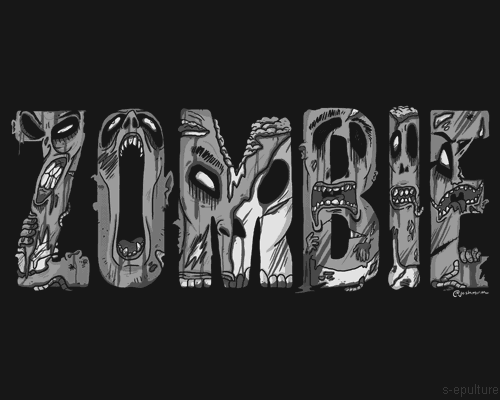
The Origins
The generally agreed-upon first zombie movie is White Zombie (1932), starring Bela Lugosi, but I think it’s safe to skip it on account of both obscurity and some troubling racism. The Haitian-Voodoo zombi mythos and tradition is something best kept separate from our modern ideas of the walking dead.
Instead, start your journey with George Romero’s Night of the Living Dead (1968), which starts codifying the tropes that persist well into modern media (including, like most modern stories, never using the word ‘zombie’).
Then compare and contrast with the Richard Matheson novel I Am Legend (1954), which is ostensibly about vampires but I think basically invented the modern zombie genre -- from the post-apocalyptic setting to the spread of undeath by way of disease vectors.
Follow that up with Dawn of the Dead (1978), where George Romero revisits his Living Dead universe with the help of Dario Argento (if you’re interested, there’s a 2004 remake that’s decent, but unnecessary). And then, just to wrap up the trilogy, skip on ahead to Day of the Dead (1985).
For extra credit, play the videogame Dead Rising (2006), which draws liberally from Dawn of the Dead and also allows you to beat zombies to death with literally anything you can find in a shopping mall (I can’t speak for the sequels as I’ve never played them). Dead Rising is far from the only game franchise to use zombies (more on that in a bit), but it pays homage directly to the genre in a way that many others don’t.
The Zombie Renaissance
For a long while, zombies sort of fell out of fashion. Oh, there were some decent takes on the concept, like Re-Animator (1985) and Dead Alive (1992) but by and large zombies in the 1980s and 90s were played for laughs.
But then they made a great big comeback, stronger maybe than they had ever been before. What happened?
Well, for one, they stayed close to the public conscience thanks to video games. Games and zombies are a perfect fit. Their shambling movement and slow, stupid behavior makes them a great choice for imperfect AI programming. They’re people-shaped, which makes them easy to animate, but they can be gross and deformed and scary, which makes them fun for your art team. And since they’re inhuman and dead, you can kill them in any way you’d like without feeling bad about it.
Which is probably why zombies have been part-and-parcel of the gaming world since Entombed (1982) was released on the Atari. Doom (1993) was wildly popular, and just a few years later we’d start the Resident Evil franchise, which became both hugely influential as games and films. And lest we forget, Blizzard was giving us undead in Warcraft by the early 2000s, rising to greater prominence by World of Warcraft in its heydey (especially Wrath of the Lich King).
But I’d argue that the number one single most important ingredient in the horror revival was Danny Boyle’s 2002 film 28 Days Later.
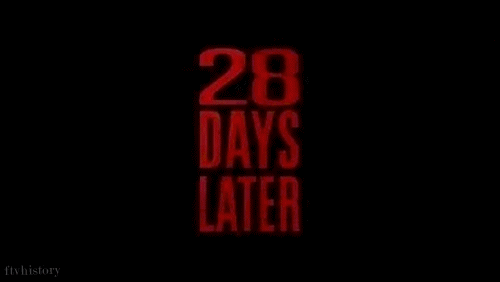
28 Days Later was huge because it breathed fresh life (pun intended) into a genre that had gone stale. The monsters in 28 Days Later aren’t the walking dead at all -- they’re just people infected with a virus similar to rabies that makes them deadly (compare and contrast with The Crazies, both the 1973 original and 2010 remake, which deals with a similar concept.
But thanks to being an excellent film with some wonderfully creepy-gross effects, 28 Days Later reignited fearful imaginations. It also introduced the world to the idea of fast zombies as an alternative to the usual shambling monsters.
A couple years later, zombie content exploded. Aside from the Dawn of the Dead remake in 2004, and some Resident Evil and Doom film interpretations, we got Shaun of the Dead (2004), which is both hilarious and an exceptional zombie film.
There’s also 28 Weeks Later (2007), a sequel to 28 Days (there is much debate as to which is better, I’m in the Days camp) and Planet Terror (2007), a personal favorite and one of the two films in the special Grindhouse double-feature. I’d also like to shout out Pontypool (2009) and, of course, the horror-comedy Zombieland (2009).
ZOMBIE MANIA
Probably nothing has been as influential in drawing zombie discourse into the public as AMC’s hit TV show The Walking Dead (2010), drawing on the graphic novel series of the same name. With a level of gore and violence rarely seen on network TV, a cast of memorable characters and an anyone-can-die narrative, it ignited a zombie fervor greater than anything we’d ever seen.
The Walking Dead overlapped with a cultural apocalypse zeitgeist. Doomsday prepping started to go mainstream, and people started to plan their own personal zombie apocalypse survival plan. Hell, the CDC adopted zombie apocalypse language as a way to talk about real-world applications of survival knowledge. Zombies and survivalism now go hand-in-hand, for better or worse.
No discussion of a zombie apocalypse is complete without Max Brooks’ World War Z (2007), which bears little resemblance to the film that shares its name. We should also make a shout-out for his more comedic companion volume, The Zombie Survival Guide (2003), which laid a foundation for what followed.
For extra credit, play the TellTale Games: The Walking Dead (2012) and compare/contrast with the TV show and graphic novel. Then compare that with Train to Busan (2016), a Korean film that plays some tropes straight while turning others on their heads (it’s also one of my favorite films on this list).
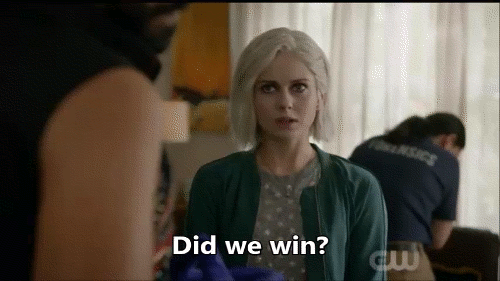
SYMPATHETIC ZOMBIES
While the zombie apocalypse narrative took root and captured the imaginations of many, others started to look at things from a different angle.
What if, they asked, the zombies were the heroes rather than the villains?
John Ajvide Lindqvist, who you might know for the vampire story Let the Right One In, was ahead of his time with this on: Handling the Undead (2004) is a book that’s simultaneously heartbreaking and deeply unsettling in its portrayal of the dead returning to life and what that might mean to those they’d left behind. Compare and contrast that with the TV show Les Revenants (2004), which deals with a similar premise (there was an American remake, but I can’t speak for it as I didn’t watch it - seriously, just watch the subtitles and enjoy the French show).
But not every zombie-protagonist story was so heart-wrenching. Look at Isaac Marion’s Warm Bodies (2010), and the film adaptation. There’s also Breathers! A Zombie’s Lament by S.G. Browne that is both hilarious and scathing.
Follow those up with Diana Rowland’s My Life as a White Trash Zombie (2012) and the comic book/TV show iZombie (2015), both of which feature pale-haired, witty female medical examiners with a taste for brains.
And finally, a shout-out to The Santa-Clarita Diet (2016), a hilariously dark and over-the-top gross show featuring Drew Barrymore as a zombie trying to get her life back together.
50 notes
·
View notes
Text
Things you may not have known about Blade: The Vampire Hunter
1. A lot of people mistakenly believe that Wesley Snipes is the most accurate to the comic in regard to Blade The Vampire Hunter and that he was “perfect’ for the role. The simple fact is if you’re familiar with the comics you would know this is not actually true at all. Most of this list will be reaffirming this first point and that is why I write it first. Many people judge by first impressions and for non-horror comic readers their first introduction to Blade was those movies so they assume that it is the most accurate as it is the version that they are most familiar with. In a way I think discovering comic book Blade is sort of like when someone reads Frankenstein for the first time and realizes The Creature is highly intelligent and has no flat head or neck bolts...
2. Blade was not American. Blade was a Black British man. In the comics he was born in London and is now nearly a century old (his physical age is hard to determine and therefor a man of roughly any age between twenty through sixty can play him). He does not have an American accent. For some reason Hollywood still has difficulty imagining Black Brits (except perhaps Idris Elba). He is also of a mixed racial background. After Blade’s first appearance in the 90s Spider-Man animated series he was thereafter always played with an American accent and later specifically imitating Wesley Snipes voice and tone.
3. Blade didn’t always just wear black. Blade actually has very flamboyant tastes in clothes. His first appearance had him wearing a green jacket with a wooden stake holster, puffy “balloon” style pants, boots, and over-sized translucent aviator sunglasses / goggles. And it was not merely because this was the 70s. Less than ten years ago Blade appeared in a Spider-man storyline where he chose (deliberately) to wear a pink and green Spider-man costume with his now trademark leather jacket over it.
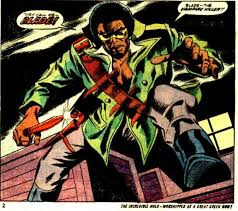
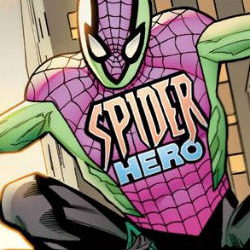
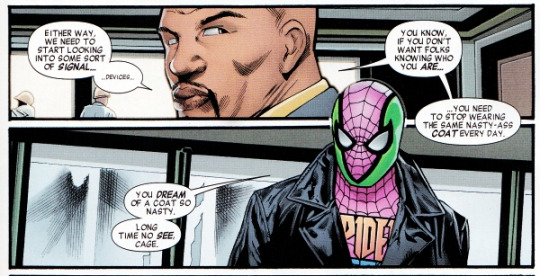
4. Blade does not always say “Mother f--ker” or “F--k.” Blade actually swears relatively minimally in his earlier comics. In some later comics they tried to imitate how Wesley Snipes speaks but in general Blade does not swear that often. He swears about as often as Doctor Strange.
5. Whistler was not a hard edged, gruff, old redneck type. The first depiction of Whistler was in the 90s Spider-man animated series and he was physically modeled after Peter Cushing’s version of Doctor Van Helsing. He walked with a cane and had an English accent. The homage to Hammer horror was so distinct that his and Blade’s lair in that cartoon was behind a horror theatre that specialized in “Terrence Fisher” movies.” Terrence Fisher had directed just about all the Hammer Dracula movies that featured Christopher Lee and Peter Cushing. This version of Whistler was kind, gentle, and very paternal and doctorly (toward humans).
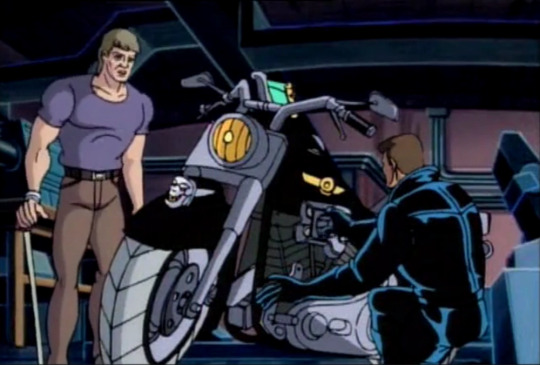
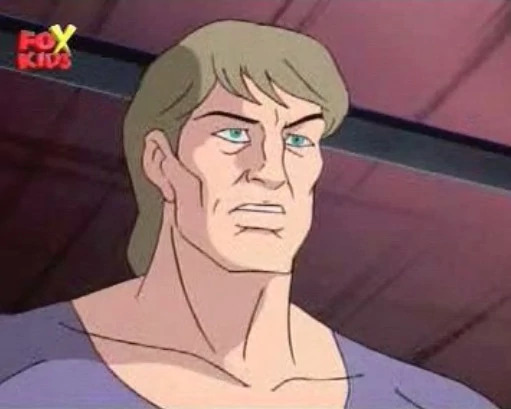
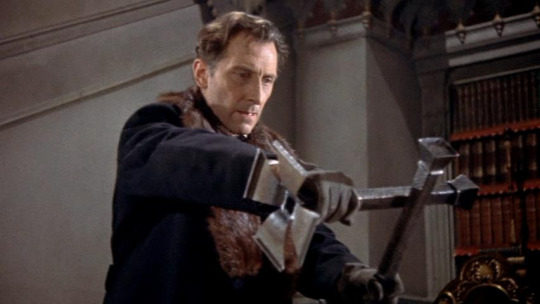
6. Blade’s first appearance was actually in the comic Tomb of Dracula where Dracula was actually sometimes portrayed in a sympathetic light. Tomb of Dracula was adapted into an anime movie which got dubbed into English in 1981. It is titled Dracula: Sovereign of the damned. Strangely, the company that adapted the graphic novel did not get the rights to Blade so they had to maneuver the story without him.
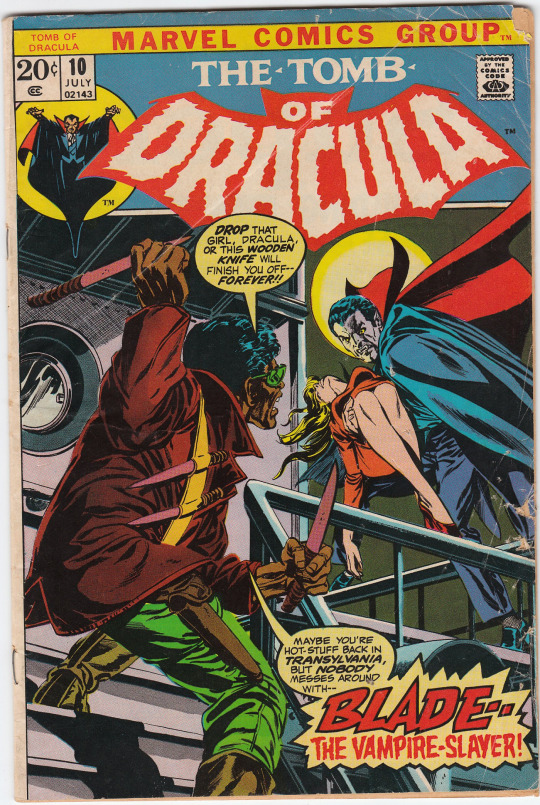
7. Blade had worked alongside Spider-man and currently is an Avenger. He was also a member of The Night Stalkers and The Midnight Sons. So much for “Not a team player,” eh?
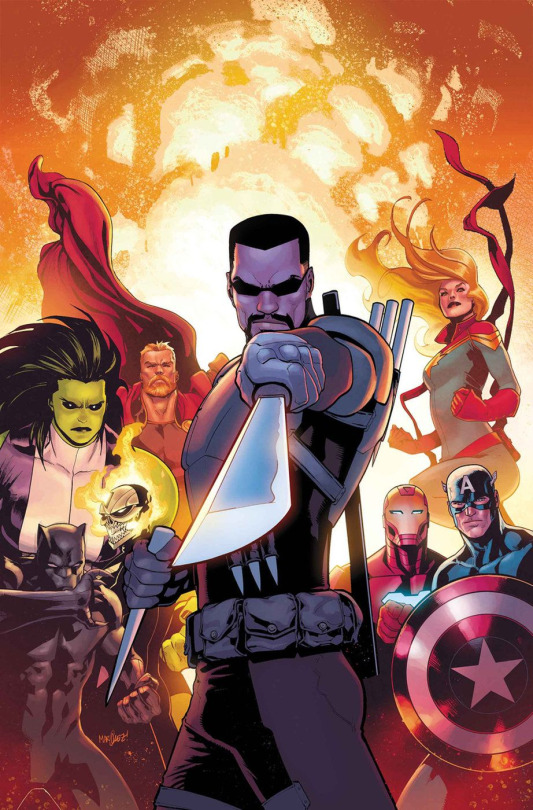
8. As recently as three years ago Marvel had plans to introduce Blade’s long lost daughter, Fallon grey. The concept art was released at the 2015 Comic Con but the character was never introduced. Perhaps it was for the best.

9. Blade has shown some sympathy to certain vampires. Though it wasn’t the best eulogy, Blade did speak at the funeral of Morbius: The Living vampire (he didn’t stay dead...) And in some rare occasions he has even worked with Count Dracula.
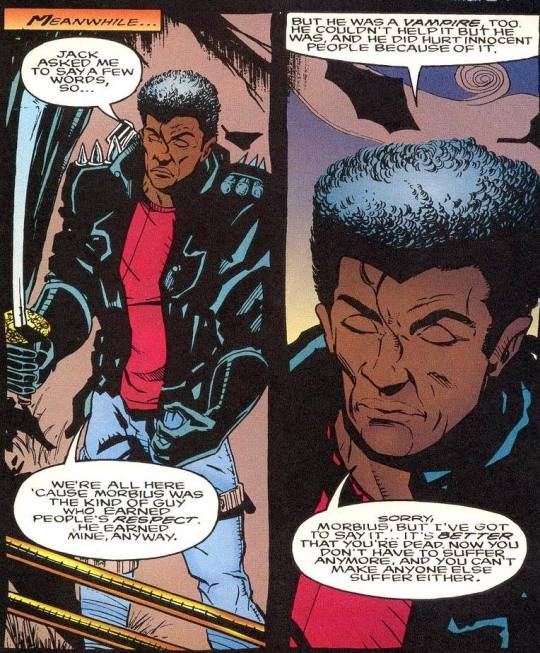
10. Blade was actually AGAINST the Superhuman registration act during the comic book version of Civil War. Hurray for common sense! Seriously, unlike the movies that made the registration act seem reasonable, the comic book version was more like a Nazi census and children were rounded up much like the Mutant registration act of earlier X-men comics. Blade was not in the wrong.
11. The term Daywalker was first popularized by Blade however its oldest use may actually be in the third novel of Fred saberhagen’s Dracula book series. The book called An Old Friend of the Family has a spell to summon Dracula, which bore the line “Walker by day, Walker by night” and may have inspired the term “Daywalker.”
Daywalker, by the way, is a modern concept. Dracula in Stoker’s novel could walk by day and night. He was just weaker by day and could not take animal form or mist form by day. (He could do that at night though. Dracula often could take back, wolf, or mist form so long as the sun was down.) This is also true of Carmilla in her original novel in that she was merely weaker by day.
The first known story where a vampire actually burns in sunlight is the silent film Nosferatu (and that was mostly meant to be metaphor). It had not yet even become mainstream lore at the time of the release of the 1931 Dracula movie starring Bela Lugosi (Sunlight is never described as a weakness in that film). Sunlight was not used in the Universal monster movies as a weapon against vampires until the sequels.
12. Dracula in Marvel comics (where Blade first appeared) bares very little to no resemblance to the version in Blade: Trinity who answered to the name Drake. Dracula in Marvel comics is more traditional, able to change his own age based upon how much he has fed, and is able to turn into a bat, wolf, and mist and he can conjure storms like Storm or Thor. He does not look or sound like an American professional Wrestler. Also he was the self-titled king of the vampires in the comics and never claimed to be the first vampire as there are plenty of vampires older than himself. The only similarity the comic book version of Marvel’s Dracula has with the version in Blade Trinity is the implied high sense of honor which can only be found in the DVD / Blu Ray bonus and alternate scenes.
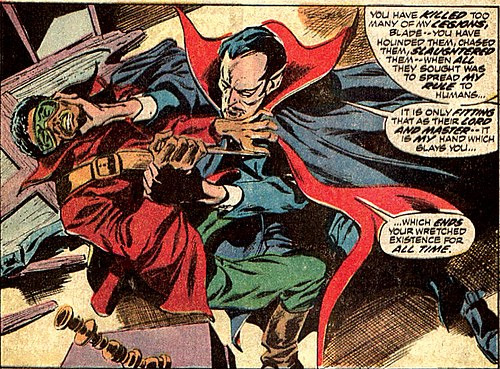
13. Hannibal King is NOT Deadpool. Ryan Reynolds is a fine actor. That being said it should be noted that Hannibal King’s personality is nothing like what you see in Blade Trinity. Hannibal King is a “vegan vampire” (a vampire that doesn’t kill) and works as a detective. He’s more of a Sam Spade type... but with fangs. Also much like Dracula (and most vampires in the actual comic books) he could turn into a bat, wolf, and mist. These are powers downplayed or out-right ignored for the films. (Personally I’m tired of vampires being reduced to just super strong and superfast. I miss the shapeshifting. It probably would have made the fight scenes more interesting...)
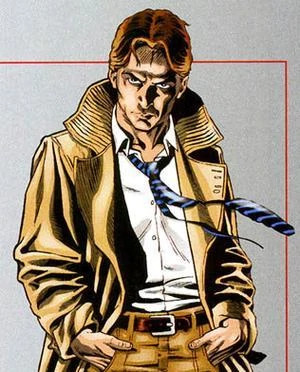
40 notes
·
View notes
Note
Any tips or things to keep in mind while writing a original mecha story? What about for original mecha stories aimed at a female audience? (Like ones that are more character focused, but have some Real Robot elements like TLGG, Gunbuster, Eva or Macross)
Hi Anon! Thank you for the Ask!
I’m more of an analytical and academic writer, but hopefully I can be of help anyway.
General Tips
1. If you haven’t already, ask yourself these questions:
What kind of mecha story? For myself (and I think this is true of a lot of mecha fans), “mecha is a genre”—but—it’s not a genre that happens in a vacuum. Both Real Robot and Super Robot can take place in hard science fiction settings as well as fantasy settings with magic.
What kind of writing? Short story, long form novel, novel series (light and long form), poetry, experimental formats, sequential illustration formats (e.g. comics, manga), plays, television/film/animation, etc.
Have you read a mecha story that was not in sequential illustration format?
And now I really want to read/listen to a mecha story in Middle English with iambic pentameter. It could have a name like: “Overwalken Searshaft: Caunterbury Legendes.”
(yes English nerds, that title is some sloppy Anglish smooshed with Middle English but you get the idea)
2. Most people are introduced to mecha via anime, manga, or film; and so are likely to not have read mecha stories in a non-visual format. When a show is scripted, there is a lot of writing that goes into describing scenes that we don’t think about because we’re seeing/hearing the visual and audial representation of that writing.
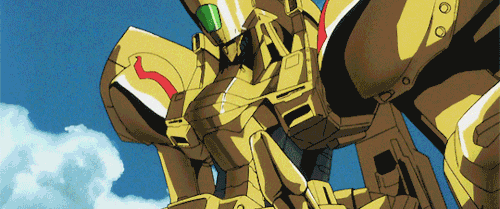
If a picture is worth a thousand words, how many words is a single frame worth? Without any context, what do you think is happening in the gif above? How would you describe this less than 3 seconds of action if you were writing it?
I recommend that you read a few novels or short stories that involve mecha or giant robots of one kind or another. They might not be the type of story you’re planning on writing, but they should help with deciding on how much detail you want to go into when writing scenes with mecha (action or otherwise).
Here’s a few to try:
The Pacific Rim film novelization by Alexander Irvine.
The Del-Ray Robotech novels by Jack McKinney. Skip the ones that are about events in the Robotech cartoon—they are all good—but I recommend reading the ones that are fully original, (books #13-17).
“The Relic” by Jonathan Green is a short story within the “Legends of the Space Marines” series from Warhammer 40K. In Warhammer 40k, a “Space Marine Dreadnought” is a powerful Real Robot mecha. One doesn’t need to know the entire mythos of Warhammer 40k to understand the story.
“Mobile Suit Gundam: Awakening, Escalation, Confrontation” by Yoshiyuki Tomino. This book is the English translation and compilation of the three light novels that Tomino wrote. It covers the MS Gundam 0079 story, but with added detail (more about New Types, politics of the Zabi family, etc), and is much darker than the anime.
All of the above are Real Robot mecha under different levels of “science-fiction hardness" and settings. I cannot think of any novels or short stories that are about Super Robots, but they probably exist.
Two Specific Things
1. World-building will need lore and rules for the mecha. Even hand-wavey science-fiction or fantasy-with-magic settings have rules about who can pilot a mecha, how it’s done, what materials the mecha is constructed from, its power source, how it moves, how the pilot(s) perceive the world around them while piloting the mecha, its weapon and defense capabilities, etc. The harder the science-fiction, the more constraints are imposed, and will likely require real world research to help describe it.
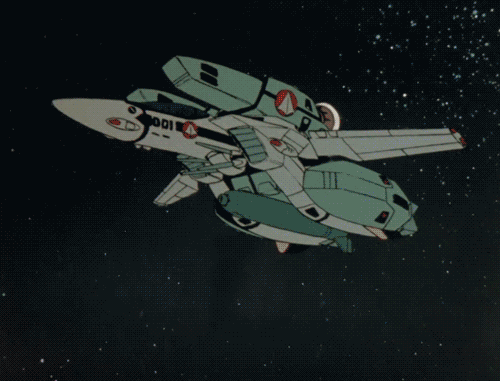
For example: Gravity is a Thing. Some Super Robots can fly in such a way that they can easily leave Earth’s atmosphere at or above escape velocity and do battle in multiple types of different gravity environments (e.g. Godmars vs Getter Robo). It’s hand-waved and not really thought about. This happens in Real Robot too, but there are many Real Robot stories that use gravity limitations, while hand-waving other things (not all giant robots can fly).
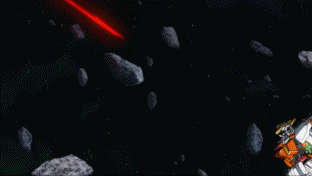
As shown above—in Gundam 00—the Gundams can do battle in space and LOE (zero gravity and Low Earth Orbit), and also in mid-air (atmosphere) and on the ground. That’s the hand-wavy part, because if we think through the physics of this, a machine optimized for aerial combat at Earth gravity (1G) is probably not going to be optimized for combat in LOE, in space, or in gravity conditions that are less than Earth’s (e.g. the Moon, Mars, etc). The Gundams can fight in all these conditions, but one of their constraints is that they cannot accelerate to escape velocity or shield themselves from high temperature friction during re-entry (atmospheric re-entry is a constraint used throughout the franchise). In Gundam 00, the Gundams have to be transported between surface to space via the space elevators.

Above: One of the things that is a “game changer” for these Gundams within that setting, is that Dynames can use the Super Substratospheric Altitude Gun, capable of hitting an orbital target from a stationery position on Earth’s surface. Use of this weapon comes with additional constraints (power, connection to a network for calculations, etc).
Super Robots can also have constraints. Both the Evas in Evangelion, and the combined form of Dairugger/Vehicle Voltron have a timed operational power limit. Evangelion has a lot of Real Robot elements, so as far as Super Robots go, they’re not very powerful. The more powerful the Super Robot, the harder it is to define a constraint. This is typically where a story hits the “His power level is over 9000!” problem, or “unleashing the full power will destroy the robot, or kill the pilot.”
Which brings us to Specific Thing #2: Why mecha? What problems do the mecha solve for the protagonist? Especially if a story with a lot of character focus is what you’re going for. How much focus do you want to put on the mecha? The answers to those questions are going to help with the lore and rules for the mecha.
Aiming for a Female Audience
I’m probably the worst female-ish person to advise on this because I rarely identify with female characters, especially as a tomboy in the 80s (of course, most of them weren’t written very well to begin with back then). I identify as gender fluid, but the gender binary that I grew up with still shapes my life. My tastes in fiction are all over the place and are probably not representative of a “female audience.”
But I do know that there were a lot of women who liked Gundam from the start. (ʘ‿ʘ✿)
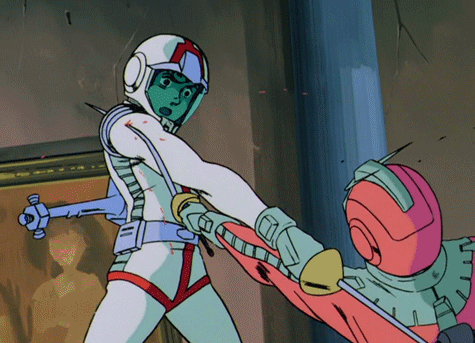
Above: Amuro and Char fight with fencing foils in mid-air.
Any audience can be widely diverse, and not everyone within a demographic (broad or narrow) is going to agree on what they want to see, but it’s safe to assume that a sizable part of a female audience that would be interested in a mecha story is probably going to be Done™ with something that is commonly found in either mecha stories or mainstream science-fiction and fantasy. As to what that specifically is, that can differ quite a bit.
For me, I’m Done™ with “Tits And Camel Toe Out For Mecha” in stories with teen characters that are really just ecchi content with a veneer of a serious story slapped on top with a Gainax Ending.
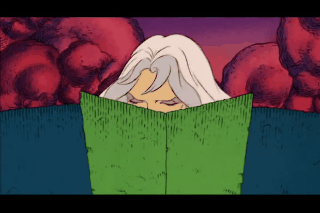
I’m saying that as someone who loves Go Nagai and Satoshi “Plastic Nipple” Urushihara, and thinks that the Heavy Metal movie (gif above) is a work of art, which probably makes me a hypocrite, but hey, I have standards for my T&A.
I recommend looking at stories that are known to be popular with women, and then look at stories that are known to be popular to specific demographics of women (intersectional identities). They may not be mecha stories, but if they are in the current zeitgeist, then there is something about the narrative, characters, format, etc that might be common between these stories and quantifiable in a way that can help you aim for a female audience. It might be hard to find out what these are beyond a broad female audience, so research will be necessary.
There are much better sources for advice on this than me, so if audience appeal is something that you want to dive into, then you’ve got your work cut out for you.
Character Focused (a grain of salt)
In my biased and totally not expert opinion: the smaller the main cast, the easier it is to have a character focused story (unless you meant “character driven plot”?), and the mecha itself usually gets a lot of attention as that’s more or less the point of the genre.
However, a larger main cast provides more varied opportunities for focusing on character interactions, and more material for plot hooks to support multiple plots that can be structured/threaded in a variety of ways. TV Tropes (not my favorite source, but it’s good enough for this) has a rabbit hole of entries about different types of concurrent plots: Soap Wheel; A-B-C-Plot; Two Lines, No Waiting; Four Lines, All Waiting; etc. These entries are useful for getting outside of one’s head and considering options for how-and-when to introduce and wrap up plots. If character focus is what you want to prioritize, then start with “Soap Wheel,” as soap opera plots are all about character focus and they are a good example of staggering plots in a way that keeps the story going for 20 years or more.
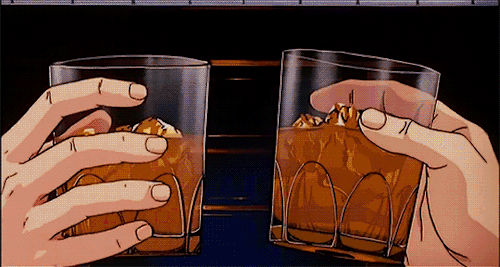
Above: Wolfgang Mittermeyer and Oskar von Reuenthal from Legend of the Galactic Heroes enjoy a drink while scheming. LotGH makes the most of its hundreds of characters with scenes like this. It’s character focus of a different kind. Like Gundam, LotGH has a lot of female fans, but it’s not a show that one would immediately think of that would appeal to a female audience.
Returning to this thing about “character-driven plots”, that’s a concept that I’ve found to be generalized and abstracted to the point where it doesn’t mean anything anymore. A plot-driven story can have a lot of character focus, and most mecha stories are inherently plot-driven (b/c genre), as the mecha is the vehicle for the protagonist to get from Event A to Event B. Mystery and romance genres are an example of plot-driven stories, and in both (but especially romance), there can be a lot of character focus to the point where B and C plots could be “character-driven” if they are about the specific character’s internal change, conflict, growth, some essential part of themselves that demands action, etc.
A mecha story can be structured with a plot-driven long-running A Plot which requires the mecha (so not monster of the week as those are episodic and not long-running), and certain main characters are focused on in such a way that their own internal struggles, conflict, and growth drive B and C plots. It’s up to you if those plots are concurrent, cyclical, or rotate in-and-out of focus.
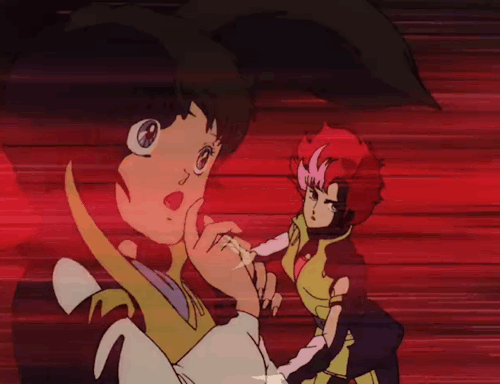
For example: Aoki Ryūsei SPT Layzner (shown in the gif above) is a Real Robot anime has two sequential long-running A Plots that are plot-driven and focused on the mecha and its pilot (the protagonist). The first A Plot drives the first half of the series, and the second A Plot drives the second half of the series (which was sadly cut short so technically it wasn’t the full second half). There is a time-skip between the A Plots. The protagonist, Eiji, has an internal struggle that is threaded throughout, the focus on him creates the “character-driven” B Plot (who he is, the mystery behind the strange things that happen to him as he pilots the prototype, his conflicting loyalties between both halves of his heritage, how he reconciles his extreme pacifism with being forced to fight and possibly kill, etc). The small main/supporting cast is used effectively as each supporting character interacts with Eiji in such a way that they are integrated into the B Plot for his growth and resolving his internal conflict. The other main/supporting characters have their own struggles and character growth as well, but not quite enough to constitute a “character-driven” plot. The story’s minor C Plot is external and puts pressure upon the A Plot.
For what it’s worth: A truly “character-driven” plot—or story that is fully character focused—is going to yield a story like Franz Kafka’s “Metamorphosis,” which would be interesting to explore within the mecha genre, but I have a feeling that you’re probably not interested in that much internalized character struggle.
Finally Anon, thanks to your Ask, I’ll have to add “Write a Canterbury Tales parody mecha story in Middle English” to my bucket list. I don’t know why my brain went there but it did. Please enjoy one of the best videos I ever found on YouTube:
youtube
(yes English nerds, the guy in the opening says “Old English” when it’s not OE, it’s ME)
36 notes
·
View notes
Text
The Marvels of Roy Thomas
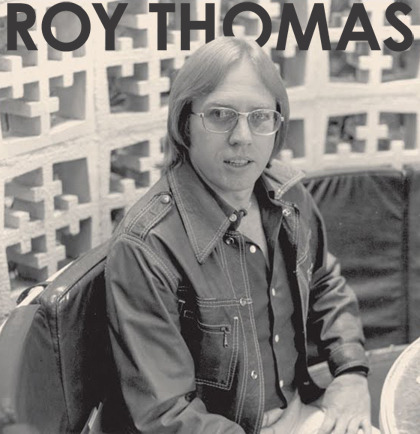
2018 saw revival of an era that was known for Roy Thomas’ writings and co-created characters that go back to the late 60s. At first, in September of 2018 it was announced that Marvel would start or re-start publishing three ongoing Conan titles and in the same month came the 1st trailer of Captain Marvel (starring Carol Danvers/Brie Larson), a character created by Roy Thomas and Gene Colan
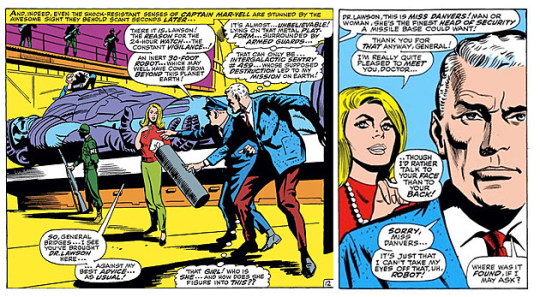
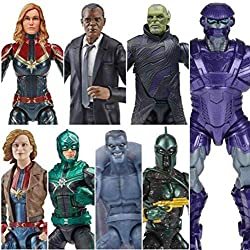
Buy Marvel Legends Captain Marvel Wave here
Carol would become Ms. Marvel in late 70s (thanks to Gerry Conway, Carla Danvers, John Buscemi and Joe Sinnot) as part of drive to launch more superheroines but she would recieve her powers much earlier in Captain Marvel no. 18 (1968) when Thomas was writing the title
Co-Creations
For those who don’t know much about Roy Thomas, he not only succeeded Stan Lee as Marvel’s Editor-in-Chief but is also someone who co-created many of Marvel’s most popular characters, many of whom have graced the silver-screen along with TV. It is hard to imagine anyone other than Stan Lee who has co-created more characters than him. To name a few of Thomas’ co-creations, they include (but not limited to) Wolverine, Ghost Rider, Man-Thing, Valkyrie, The Defenders, Luke Cage, Iron Fist, Morbius the Living Vampire, Black Knight, Vision, Adam Warlock, Yellow Jacket and.......Ultron (Defenders is the only team that was solely conceived by him)
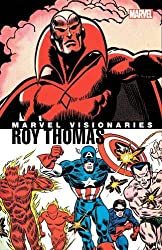
Buy Marvel Visionaries: Roy Thomas
When Diversity became the new norm
If the concept of an Anti-Hero was introduced by Timely Comics in the Golden Age with Namor the Sub-Mariner, its popularity reached new heights in the 70s thanks to Thomas’ co-created characters. In fact, the Bronze Age of comics began with the introduction of anti-heroes such as Wolverine, Punisher and Ghost Rider followed by Hollywood inspired characters such as Luke Cage, Iron Fist, Morbius and Shang-Chi that were Marvel’s approach to meet the demands of Blaxploitation, Kung-Fu and Vampire fans at the time
Gone were the days of a major super-hero with his/her own title being a White male or female nor were they a reflection of a WASP-ian world which DC Comics couldn’t get out of. Of course, Stan Lee, Steve Ditko and Jack Kirby laid the foundation for such a universe but during Roy Thomas’ tenure at Marvel; the horizon was broadened. This new approach paved the way for Marvel to launch standalone titles for characters like Black Panther written by Don McGregor with art by Billy Graham and Rich Buckler
Roy Thomas’ Imagination...second only to Stan
As a writer, Roy was Stan’s true successor. His uncanny ability to take storywriting and character creation to a whole new level makes it popular among today’s readership much like Stan and Jack’s work. When we compare him with his successors, they were mainly “leaders” who took Marvel to new heights due to their superb Editorial skills/leadership but their level of creativity couldn’t match with what Thomas had delivered. Joe Quesada comes a close second but his Editorial tenure is more about redefining characters and injecting Indy blood into mainstream comics. In case of Thomas, achieved success as a writer, editor and a co-creator similar to Stan
But what makes his contributions to Marvel unique from the rest are highlighted below:
Marvel’s 1st Inter-Galactic War
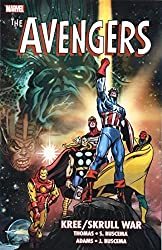
Buy Avengers: Kree/Skrull War here
Galactus came to devour Earth. the Skrulls infiltrated life on Earth only to end up as cows but the Kree/Skrull War was different. This was the first Space Opera of EPIC proportions. In this story, Earth is caught up in an Inter-Galactic war between the Kree and Skrull empires
The arc involed Avengers, Captain Marvel (Mar-Vell) and Fantastic Four as protagonists and such an excercise at a grand scale at the time was never done before. Yes there were guest appearances by fellow heroes but having something that would be the foundation for future cross-over events to come was the first of its kind. This series was way ahead of its time to the extent that it served as a foundation for Brian Michael Bendis’ Secret Invasion arc in 2008. This just shows the richness of the content
Enter Retcons
Both Marvel and DC had practically shelved much of their Golden Age characters that weren’t first tier superheroes. It was Roy who still saw potential in them and had cross-overs in which the Golden Age characters would time travel to meet their future selves or their Silver Age replacements. Of course this just didn’t give birth to the new, ground breaking concept of Retroactive Continuity (Retcon) but it also gave birth to new characters that would keep Golden Age continuity fresh for Silver Age audiences
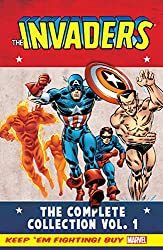
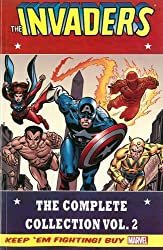
Buy Invaders’ collection here
What Ifs & Team-Ups
DC Comics had an on-going series called Imaginary Stories which served as the pre-cursor to Elseworlds imprint in the late 80s. Marvel didn’t have a title that would have stories of its flagship characters that weren’t part of its mainsteam continuity. Again, this gap was filled by Thomas with the What If title that continued till 1984
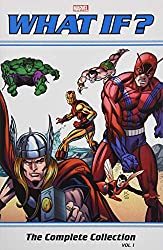
Buy What If Classic collection here
Another successful title was Marvel Team-Up which mostly starred Spider-Man. The series co-created by Thomas and Ross Andru continued till 1985, explored various superhero combos within the mainstream continuity of Marvel Universe
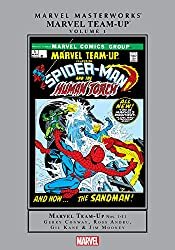
Buy Marvel Team-Up collections here
The Deal Maker & a Savior
While working as an associate Editor in 1970, Thomas proposed to the then publisher of Marvel (Martin Goodman) to license Robert E. Howard’s Conan. The reason for doing so that Marvel was recieving requests to have literary properties adapted into comics and Conan was the most requested by the fans. It wasn’t easy to get it done as the budget was limited for licensing. But Roy was so dedicated to his work that he was even willing to knock a couple pages off his rate “to even things out"
The deal happened, Barry Windsor-Smith was hired to do the art and the rest is history. Conan The Barbarian continued till 1993 making it one of Marvel’s most successful title in the 70s
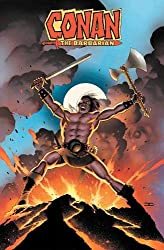
Buy Conan the Barbarian: The Original Marvel Years Omnibus Vol. 1
Another licensing feat for Thomas was of Star Wars. In his blog post entitled “Roy Thomas saved Marvel”, former Marvel Editor-in-Chief Jim Shooter (who was an associate Editor in the mid-70s) recalls the struggle Marvel was enduring due to weak titles suffering from bad content strategy that resulted in declining sales. As a way out of financial misery, Roy had suggested to license an upcoming science fiction movie called Star Wars and publish an adaptation thereof
While Jim and Roy didn’t see each other eye-to-eye and due to their disagreements Roy ended up writing exclusively for DC Comics in the early 80s, the following excerpt from Jim’s blog post says it all about Roy’s initiative and its success that continued well into the next decade:
“There was a lot of opposition to Star Wars. Even Stan wasn’t keen on the idea.
Even I wasn’t. I had no prejudice against science fiction, but wasting time on an adaptation of a movie with a dumb title described as an “outer space western?”
I was told—don’t know for sure—that George Lucas himself came to Marvel’s offices to meet with Stan and help convince him that we should license Star Wars. I was told that Stan kept him waiting for 45 minutes in the reception room. Apocryphal? Maybe. Roy would know. But if so, it still reflects the mood at the time.
I don’t know how Roy got it done. I was just the associate editor, and not privy to much of the wrangling that went on. But, Roy got the deal done and we published Star Wars.”
- Jim Shooter: Roy Thomas saved Marvel
This was a time when Disney didn’t own Marvel and Star Wars. Just imagine where Marvel would be today had it not been for this deal worked out by Roy
End Note
It is fair to say that his work at Marvel has had a cult following over the years but now its going mass considering the the successes witnessed at the box office and Netflix
The re-launch of Star Wars comics in 2015 saw a million copies sold of its first issue, Marvel in 2018 won the rights to re-publish Conan titles, the What If title has also been re-launched
All of this begs the question: What was the secret behind Roy’s successes at Marvel? He may be the only writer/creator one can think of who was able to gauge popularity of Hollywood’s entertainment genres with comic book readership at the time. In most of his works, Hollywood’s reflections cannot be ignored. In the 60s, it was the Star Trek & Space Odyssey inspired space opera, in the 70s it was Kung-Fu, Blaxploitation, Anti-Heroes and Crime-fighting duos
In the year 2019, with the release of Captain Marvel movie in March; the superhero fans are being entertained with comics and movies that owe a great deal to this man. It wouldn’t be odd to name 2019 as ‘The Year of the Roy’
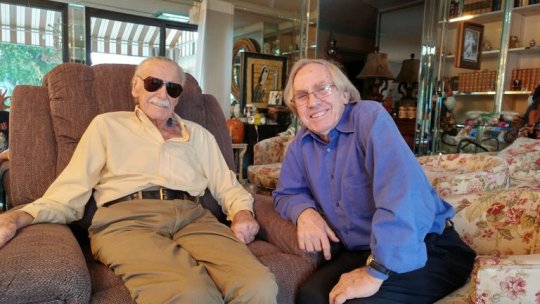
➡️ Get the entire Roy Thomas’ Marvel collection here
#classic marvel era#classic marvel writers#roy thomas#captain marvel#ms. marvel#kree skrull war#diversity#anti hero#blaxploitation#kungfu#captain marvel movie#Marvel Comics
61 notes
·
View notes
Note
If a person were interested in getting into star trek..where would be a good place to start?
I don’t know if I’m the right person to answer this, because the way I got into Star Trek was, I think, a little unusual. See, for the majority of my life, I didn’t think I would like Star Trek. I thought Star Trek was exactly the kind of series I didn’t like. (I also thought this about Spider-Man, granted. Either there’s a pattern with me, or there’s a pattern with the way interesting long form canons are adopted by heavily male fanbases, boiled down to their least interesting elements, and in how those elements are the ones that end up being showcased in broader popular culture and that end up setting the perception of said series for the uninitiated. While not discounting the fact that it could be me, it’s probably the second one.)
So basically unlike a lot of people, I didn’t get into Trek through my parents, because my parents are the wrong kind of nerds. My parents are a dangerous combination of rock music nerds and incredibly snobby intellectuals, which probably explains some things about this account. If I ever want to kill my father I could probably just chant “I love Captain Kirk” over and over, which I haven’t tried yet but there’s still time. So basically for 22 years of my life I thought Star Trek was really boring, dry scifi that was a classic because it was old and stuff. I mean, I knew its relevance to fandom -- Kirk/Spock, pon farr, the hands touching through the glass, etc -- but it had never really captured my interest. I read some fic for it (I read a lot of fic for fandoms I’m not in when I’m bored, and big fandoms are good for this because you can find novel length works fairly easily) and I made a couple of attempts to watch the 2009 movie after reading said fic but never got more than halfway into it.
Then I really wanted to see a movie with a friend and what was in the theaters was Into Darkness, which my friend really liked. And which, it turned out, has some tropes in it that I am like, spectacularly weak to. (Animal rage. I’m so weak for animal rage.) And I went, oh damn, maybe I like Star Trek. And then I bingewatched all of The Original Series, which, imo, is one of the funnest shows ever made.
So I think my recommended starting point for getting into Star Trek would be to go back to the very beginning with The Original Series. It does help, in my opinion, when getting into it, if you have some experience with television from that time period -- I didn’t watch Star Trek growing up, but I was exposed to a lot of television from the 60s, like Bewitched and The Addams Family, and if you’ve built up a bit of tolerance for the stylistic choices of the decade it’ll probably work in your favor. (I tried to watch it once with someone who had little exposure to that decade and, shall we say, an inflexible view of the fact that what was radical in the 60s might by comparison look very old fashioned by today’s standards.) Skip the first episode as listed on Netflix; it’s an unaired pilot that, aside from Spock, features a different cast, and the footage from it ended up being reworked into a later two-parter episode so if you end up watching TOS you’ll see it anyway. The first TOS episode I ever watched was Trouble With Tribbles, which is hilarious and a good starting point if you’re someone who doesn’t mind going into things out of order.
Alternatively, if you’re more into modern television, I think you could probably start Star Trek Discovery with fairly limited Trek knowledge and navigate it just fine, especially if you’ve seen the AOS movies because then you’ll be familiar with Spock’s parents. Discovery stars Michael Burnham, Spock’s estranged adopted human sister (and if you think it’s weird that a series would drop in a sister for one of its most famous characters decades after its debut, please know that Spock surprise introduced his betrothed wife, his parents, and his half-brother over the course of the original series and the movies, so this is about the same old for him), in a prequel to The Original Series. In addition to being a modern production and therefore having much sleeker production values, Discovery also opts for overarching season plotlines rather than more episodic ones. It’s also my favorite thing on television right now.
I think ultimately with Trek what I’d do is try a couple of different pieces from it and see what sticks for you. I love The Original Series, Deep Space 9, and Discovery. I have developed a fondness for The Next Generation, but I couldn’t stand it at all when I first started it because it is much more of what I initially expected from Star Trek and it has a much dryer tone. Voyager’s characters I like, but the nature of the story throws me out of it, so I’ve only seen about half the series. Like a long form comic book canon, I think Star Trek is actually much more “user friendly” when you get into it than mainstream fandom attitudes would have you believe -- ultimately, like a long running superhero comic book, Star Trek has thrived throughout the years and developed so much canon because it tells good stories and it wants people to be invested in them and to enjoy themselves and to convey a moral message, and Star Trek itself is very much about love and the human condition and the beauty of the future.
So short answer: try Trouble With Tribbles and then take it back to the beginning of The Original Series, skipping The Cage for the time being, and maybe give Discovery a whirl, but ultimately I think Trek is one of those series you just need to try out for yourself, preferably with any preconceived notions about it dropped, and see if you like it. (Also be prepared to be alarmed by how radiantly good-looking 60s William Shatner is.)
14 notes
·
View notes
Photo



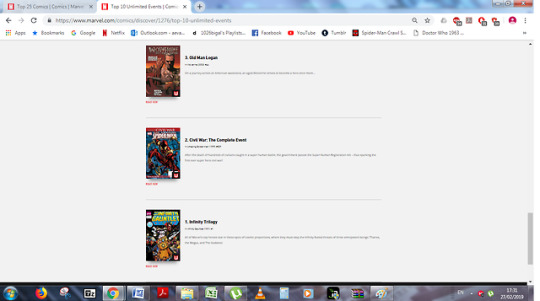

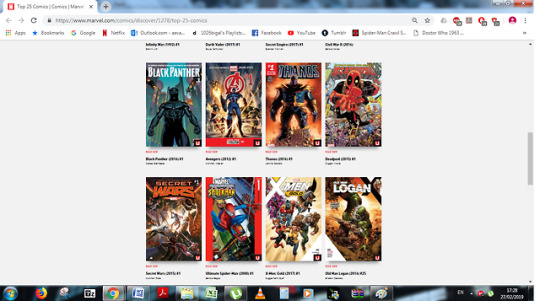

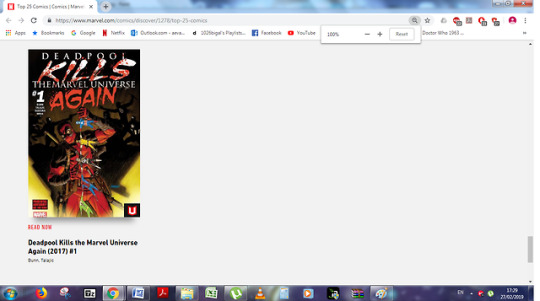
What can we arguably learn from the Marvel Unlimited’s top 25 most read single issues/top 1-0 most read event comics?
Well mostly obvious stuff but still worth a look at. Now fair cop, it is likely a lot of these stories got pushes from Marvel.com and Marvel Unlimited boosting how often they were read. Additionally it is unknown what constitutes being ‘read’. Likely it’s just clicking on the thing. Also we dunno how many of those clicks are from the same people, different people on the same account nor from the same person on different accounts. Nor how many are from people using the service for research purposes, whether their writers and artists looking for reference material or picture researchers putting together a sticker book or something.
But for the sake of argument lets say that reading the comic is actually going cover to cover, that these comics were read once by individual people on individual accounts who actively sought them out themselves
With that in mind what does the (obviously larger than the hard copies) Marvel Unlimited audiences’ choices reflect?
Well for starters the movies are mostly a big influence. The hype surrounding Thanos ever since 2012 has pushed stories and events surrounding him to a point where Thanos centric stories are represented a lot. Infinity Gauntlet, the storyline everyone was talking about for most of the 2010s is obviously the most read comic and event. Unsurprising there, although the Thanos ongoing’s inclusion is a little unorthodox. Infinity War’s inclusion is too when you think about it since the movie borrow nothing beyond it’s name, but I guess people might not have known that
Further movie influence is obvious in Deadpool, Planet Hulk, Old Man Logan (as opposed to ANY other Wolverine series), Civil War/Civil War II’s placement on the lists.
This might also have been a factor in Black Panther and Miles’ inclusion though I think that’s more owed to the hype surrounding Coates, Bendis as writers and their runs on both characters. Miles within comic book circles has been (deservedly or not) popular basically out the gate.
Darth Vader’s ongoing is surprising in a way. Not because Star Wars being on the list is that much of a shock but because it is the ONLY Star Wars title represented. You’d think there would be more and that it would be the main book. Jason Aaron writes for it and he’s a much bigger name than Soule, as was the original writer for the Vader ongoing. The book’s inclusion could represent how people veer towards what’s most recent in general, Vader’s standing as simply the most iconic SW character ever and it’s lone inclusion perhaps an indication of how the Marvel brand over all is now much bigger than the Star Wars brand.
Secret Empire being represented three times across the two lists is both surprising and unsurprising. Surprising because of how toxic that story became. Unsurprising because all the media coverage about it probably meant people wanted to see how bad it was.
Possibly for the same reason the Clone Saga is probably on there too. Also its so long and expensive in hard copy it likely encouraged people to read it digitally. Also also Clone Conspiracy’s buzz probably propelled people to read the original and vice-versa.
Secret Wars being on there is also weird. Maybe people read it to find out if it was really rebooting the Marvel Universe or whatever.
Probably should have mentioned this earlier but most of these comics are newer ones. Likely because they were the most current for each respective series and the ones that had the most obvious jumping on points.
Perhaps whats most surprising and pleasing depending what fandom you are in is that there is only one Avengers team ongoing on the top 25 list but there are FOUR X-Men ongoing team titles.
Could this mean that the X-Men in spite of all the push the Avengers have gotten are still ultimately more popular than the Avengers?
I certainly hope so.
Maybe not though because there are no X-events in the top 10 events list sans Old Man Logan (which isn’t an even its an arc but okay).
I guess the events are more all about the movies than even the top 25 individual books list.
The Infinity Trilogy (which is cheating cos that’s 3 massive events years apart) are the most read events because we all knew they were coming ever since 2012.
Civil War is the second most read because of Captain America Civil War and in fairness it was the absolute biggest event Marvel ever did in the 2000s, of the prior 10 years beforehand and possibly the biggest event they ever did since 2006. Dittko for Civil War II’s placement although refreshingly Old Man Logan edged it out again cos of the Logan movie. Infinity probably got onto that list because of it’s movie connection, it was an event launched basically in response to Thanos’ post cred sequence.
Secret Wars was just a huge event and properly crossed over the 616 and Ultimate universes. Secret Empire I already explained. Planet Hulk is a very famous story, had it’s own movie and was adapted into Thor Ragnarok.
I already spoke about the Clone events but now lets talk something more topical for this blog.
If you very unscientifically combine the 2 lists so you have a total 35 positions and exclude covers, Spider-Man specific books or events are represented 7/35 times.
Unless you count Deadpool and Old Man Logan along with the X-men team titles or count Captain America, Black Panther and some of the events which mostly centre upon Avengers characters (e.g. Civil War I-II) as ‘Avengers’ stories/titles, Spider-Man actually wins out over everyone.
And unlike those examples you don’t need to fudge the details at all. After all Secret Wars and Civil War are Marvel Universe events, not Avengers events specifically. Clone Conspiracy is a Spidey event start-finish.
And it’s rather telling that 5/35 of those Spider-Man events pertain to 616 Peter Parker.
In the events list the only events that are truly start-finish centred upon solo characters are the most controversial Marvel event ever that got Marvel financially assessed in mainstream news and an arc that isn’t really an event and the direct inspiration to a major movie.
But Spider-Man cut onto the list on his own with none of that behind him.
On the 25 individual issues lists, Miles Morales was the only solo legacy character represented and only non-Peter Parker Spider book on any of the lists.
One of the 4 Peter books was the most famous 21st century individual comic book of all time launching the most famous imprint of a comic book of all time, Ultimate Spider-Man #1.
The other entries for Peter were the launch of a new run/title so little surprise there.
And the other two entries were the one two punch that launched Spider-Man wholesale.
They were also the only Silver Age stories on the list and the only classic stories sans 1990s events that movies are being based upon.
Tellingly the 2 most read Spider-Man comics were two different but iconic versions of his origin, but his actual original origin from the 616 universe was much more highly rated.
In fact it was the THIRD most read thing on Marvel unlimited.
Which considering it wasn’t the basis of a recent or highly anticipated movie, an event story or both that’s a HUGE deal.
The big takeaway.
X-Men>Avengers and Spider-Man isn’t just Marvel’s most popular character but their most popular by a wiiiiiiiiiiiiiiiiiiiiiiiiiiiiiiiiiiiiiide margin. There were few other solo books in the top 25 and Spider-Man was the only guy with multiple entries.
#Marvel Unlimited#Marvel universe#marvel cinematic universe#mcu#ultimate universe#ultimate marvel universe#Spider-Man#X-Men#Miles Morales#Peter Parker#Avengers#Thanos#Infinity Gauntlet#Cvil War II#Civil War 2006#Secret Empire#Black Panther#Clone Saga
7 notes
·
View notes
Text
Young Justice: Denial, Cold Case, Hot Case
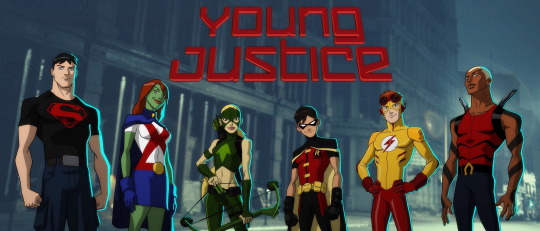
Episode 7: “Denial”
July 27th: Kent Nelson enters the parlor of Madame Xanadu. Madame offers to make contact with Kent’s deceased wife, Inza, if “fate be so kind”.
Kent responds: “But he so rarely is.”
Kent laughs at Xanadu’s attempt to contact his wife: “That was supposed to be my wife? Heck, my little spitfire would have kicked my can for throwing away good money on you.”
Kent criticizes Madame Xanadu for her fakery: “A shame, too. You have the perfect aura for the work.”
An interesting choice on the writers’ parts to make Madame Xanadu a charlatan. She would be tied with Dream Girl as the most famous pre-cog in the DC Universe. They did allow themselves room to re-introduce her as a genuine pre-cog with the “you have the perfect aura for the work” comment.
Kent is kidnapped from the parlor.
We return to the comic book series for the 9th and 10th issue, “Cold Case” and “Hot Case”, a spotlight on the origin of Captain Atom.
August 13:
School is in session for the team as Captain Atom gives a lecture on subterfuge and infiltration. Kaldur is the only member actively taking notes. Robin’s rolling his eyes, Superboy’s yawning and stretching, Wally’s stuffing his face, and the girls are polite in their expressions of boredom.
The team’s reactions ring true. Conner and Wally are self-aware enough to realize subterfuge will never be one of their strengths. Dick’s heard the same lecture a million times from the Batman. Kaldur is serious and a former military man – he knows the value of training and intel. M’gann is most likely thinking to herself “telepathing, shape-shifting, can turn invisible Martian here – we wrote the book on subterfuge”, and Artemis is wondering why she signed up for the team if it involves more schoolwork.
Captain Atom, a man encased in shiny metal, may seem like an odd choice for a lecture on subterfuge and infiltration, until you realize his pre-hero background in military intelligence.
Atom stops his lecture: “This is boring, isn’t it?”
Megan attempts to reassure the Captain but the always blunt Conner interrupts with “Yeah, boring”.
Captain Atom proposes a field exercise: “This is a cold case. Vietnam era. Captain Nathaniel Adams, United States Air Force. Convicted in 1968 of murdering Air Force General Clement Lemar. Adams died in prison. But I’ve received a reliable tip he was framed. Your assignment: investigate. Prove Adams’ innocence or reconfirm his guilt and report back to me.”
Conner interjects: “Really? You need super-powered operatives for this?”
Atom offers to resume the lecture but the team decides on the field exercise.
The team doesn’t realize it but Captain Atom has revealed his secret identity and part of his origin story. Nathaniel Adam was part of a secret experiment that transformed him into Captain Atom and catapulted him decades into the future. The frame-up/died in prison was used as a way to explain Nathanial’s presumed death.
DC Comics purchased several comic book publishers during the 1970s and 1980s. The most famous companies were Fawcett, Charlatan, and Quality. The purchases caused DC cast of characters to rapidly expand. Notable characters from the purchases included the Captain Marvel Family, Plastic Man, Blue Beetle, the Blackhawks, the Question, and many others.
DC assigned the various companies’ characters their own earths in the multiverse: Earth-F, etc. Their villains, supporting characters, and continuing adventures each happened on their own earth. The new to the DC Universe characters would occasionally interact with the mainstream DC earth.
DC decided the DC multiverse had become too complex by the mid-1980s. I’m not sure why as I was between 6 to 8 years old during this time and I had no trouble following along with the various worlds. Sorry, reboots make me bitter. We lose more than we gain in every time. Any characters created in the reboots – Tim, Conner, Bart, Kyle – could have still been created without half-assed reboots.
Back on point, DC created the “Crisis On Infinite Earths”. Despite my dislike of reboots, “Crisis” is an excellent story and a must read for any DC fan. Great writing, gorgeous art, and fabulous character moments.
Post-Crisis, there was only one earth. Captain Atom was re-launched into his own solo title. He had notable romances with Nightshade and Plastique. Atom’s main foe was Major Force whose later actions would later name the “Women in Refrigerators” trope. Captain Atom also served as the long-suffering leader of Justice League Europe. Atom was the inspiration for the “Doctor Manhattan” character in the Watchmen
Atom’s downfall would be known as “Armageddon”. He was intended to be the villain behind it. The plot reveal was leaked and the writers hastily changed the villain’s identity to Hawk (Hank Hall) – which made less sense than the choice of Captain Atom.
I dislike “hero goes bad” or “villain goes good” stories. They are rarely done well. In hero cases, the writers go to extremes – downfall of Hal Jordan, anyone? In villain cases, the bad guy has become popular, so the writers change him into a good guy and ignore the atrocities they’ve committed – I’m looking at you, Harley Quinn. Particularly the Harley in the Injustice universe.
Captain Atom never recovered from the “Armageddon” debacle. He would make sporadic appearances but nothing too memorable until the “Captain Atom: Armageddon” mini-series that led to the decimation of the Wildstorm universe.
A disguised Megan enters the Pentagon to interview General Wade Eiling, the judge at Nathanial’s court martial. Wade sums up Adams as a “malcontent” who blamed his “victim Lemar for a Viet Cong ambush” and Adams “was caught in the act by an M.P. Sergeant Polk”. Eiling, a Colonel at the time, found Adams guilty and sentenced him to life in prison. Adams “took his own life before a year was out”.
Robin easedrops from the ceiling.
Wally and Conner pose as journalism students in order to interview a Lieutenant Yarrow at a casino in Las Vegas. Conner clearly doesn’t care about subterfuge – at all – as he is still wearing the Superboy shirt. Wally is in his civilian attire.
The dealer reminds the boys “no one under twenty-one” is allowed in the casino. Conner questions if “under 21” counts “in weeks or months”.
Wally’s excited by the “$4.95 all-you-can-eat buffet”: “My kind of town!” Buffets are a true blessing for speedsters, their metabolisms, and their budgets. Not so much for the owners of said buffets.
Lt. Yarrow was Adams’ defense council: “His friend too. Served together in ‘Nam. The only survivors of Hill 409.”
Yarrow continues “Nate worked Air Force Intelligence. He suspected a weapons smuggling ring and confided as much to General Lemar. Lemar claimed to have heard rumors too. Ordered Nate to take a squad to Hill 409. It was an ambush. Nate saved my life. The rest of Nate’s men weren’t so lucky. Nate became convinced Lemar was part of the smuggling ring and had sent us into the ambush. I tried to talk him out of it but Nate insisted on confronting Lemar only to black out moments later. Later, Nate would insist he had been drugged. And I believed him. Cuz there’s no way the Nathianel Adams I knew would murder a man in cold blood!”
“I took on Nate’s defense but the prosecutor Lieutenant Kevin Blankly proved Nate’s service knife was the murder weapon. And the medical examiner, Major Shirley Mason testified there were no drugs in Nate’s system. So the judge found Nate guilty and sentenced him to life in prison. And that’s where Nate died. But get this…that judge, Colonel Wade Eiling, he married Nate’s widow and raised Nate’s two kids as his own!”
Wade Eiling would be a thorn in Nathaniel’s side throughout the Captain Atom series. Wade didn’t transform into a full-fledged villain until the Morrison Era JLA where he merged with the Shaggy Man and ran amuck as the “General”.
Robin decides the next step is to interview Shirley Mason. Dick and Megan arrive at the Arlington home of Mason only to discover her corpse.
Dick notes: “She’s got something in her hand. I don’t want to disturb the crime scene, but we need to see what it is.”
Trained protégé of Batman speaking!
Megan levitates the corpse so Robin can view the picture in Mason’s hand. The photo is a group shot of military personnel.
Kaldur and Artemis meet with Nathaniel’s children in Honolulu.
Peggy firmly believes in her father’s innocence, as did her mother, but Randy does not: “Wade Eiling is our father. He raised us. Adams gave up any parental rights the day he betrayed our country and murdered his superior officer.”
It should be noted Randy has joined a military branch – possibly the Air Force.
Peggy was born after her father’s death so she must have learned her firm belief in her father’s innocence from her mother.
Angela Adams, Nathaniel’s wife, firmly believed in Nathaniel’s innocence but went on to marry the man that sentenced him to prison? Weird.
Artemis doesn’t empathize with Peggy’s belief in her father: “Biology hardly guarantees parental skills or even basic honesty.”
Kaldur tells Artemis of his parents: “My mother, Sha’lain’a, is a native of the Atlantean city-state of Shayeris. Her skin is nearly as golden as her hair and her gills are quite large and gorgeous. My father, Calvin Durham, is a surface-worlder like you, genetically altered by Black Manta to infiltrate Atlantis as a water-breather.”
“Your dad works for Black Manta?”
“He did. But his love for my mother caused him to switch sides.”
Kaldur doesn’t realize it but there are a few important details he hasn’t been told about his parents’ romance.
If you only watched the cartoon and never read the comic books, you missed the foreshadowing that justified Kaldur’s villainous role in season two.
Dick, Megan, Wally, and Conner are in Annapolis.
Dick has identified the people in the photo.
Megan has a question: “I know my grasp of Earth history is largely based on Earth sitcoms but why would a North Vietnamese General be in a 1968 photograph with U.S. personnel?”
Someone needs to hand Megan some history books!
The group is outside General Tang’s mansion. Conner realizes another man is in the mansion and he is carrying a sword.
Conner and Wally are ready to rush in but Dick holds the duo back: “This is a covert op. We keep to the shadows. We don’t take the offensive. Like in Captain Atom’s lecture.”
Wally is shocked that Dick was actually listening to the lecture.
An invisible Megan enters the home.
Trang converses with the man: “I know why you are here. I still have my sources. I know about Mason, and I know your work. But I am disappointed, Rako. I have protected you since you were a child. Have you no loyalty?”
Rako goes for the kill but is stopped by Megan.
Conner storms in and is shocked when Rako’s sword cuts him: “I’m…I’m bleeding?”
The group battle Rako but are unable to prevent Trang’s murder. Rako escapes in the confusion.
August 14, Metropolis: The reunited team meet in a Metropolis diner.
Superboy is still shocked over his wound but insists “It’s a scratch. I’m fine. Move on.”
Facial recognition software has identified the individuals in the photograph:
1) Lt. Kevin Blankly, USAF
2) Lt. Henry Yarrow, USAF
3) Alec Rois, CIA
4) General Clement Lemar, USAF
5) Major Shirley Mason, USAF
6) General Duk Trang, NVA
7) Sgt. Ends Polk, USAF
8) Unknown child
The group theorizes the “unknown child” is Rako and that’s he been sent to tie up the “loose ends” in the Adams case.
Kaldur divides the team in half – Dick, Conner, and Wally will head to Las Vegas to protect Yarrow while the rest remain in Metropolis to investigate Polk.
The trio arrive in Las Vegas only to witness Yarrow’s house explode. Yarrow was killed in the explosion. The boys identify Yarrow by a tattoo on his arm.
The team reunites in St. George to confront the trio behind the recent deaths: Rois, Rako, and a not dead Henry Yarrow. The team quickly captures the trio. Yarrow dies – for real this time – in the fight.
The team returns to Mount Justice to report their findings: The accusations and resulting frame-up of Admas was to cover a weapons smuggling ring. Wade Eiling was the only one involved in the trial who wasn’t a member of the smuggling ring.
Kaldur and Artemis fly to Honolulu to inform the Adams kids of their father’s innocence.
Nathan and Wade mend fences over their preconceived notions of the other’s guilt. Wade informs Nathan: “Let me reintroduce you to your kids”.
The issue ends with Rois and Rako escaping from prison and meeting up with Wade. Turns out, Wade was in charge of the entire smuggling ring. He wasn’t in the picture because he took the picture!
Wade: “Captain Atom is my new best friend. Which should serve us well in the days ahead.”
An intriguing plotline that never received any follow up.
We return to “Denial”:
August 19th: The team participates in combat training. More to the point, Kaldur and a shirtless Conner spar. Artemis tries to persuade M’gann to ask Kaldur out. Good Luck, Artemis, Megan has her obsession locked in and she is not veering from the course.
Megan attempts to veer Artemis towards Wally: “You’re so full of passion, and he’s so full of..”
Artemis interjects with “It?”
I enjoy the competition between the girls over Conner and mostly for the fact that the ladies don’t let it interfere with their friendship.
Why is Conner shirtless? Is he showing off for the ladies? Kaldur kept his shirt on!
Poor Dick, as the youngest, is left out of the hormone competition. Don’t worry, Dick, you will grow up to become DC’s premier knockout.
Conner wins the round: “Black Canary taught me that.” Conner must be taking his training seriously as Kaldur would be one of the more experienced members in hand-to-hand combat due to his Atlantean military background.
Red Tornado enters. Wally wants a mission assignment. He mentions that Robin and Batman are in Gotham City doing the “Dynamic Duo thing”.
We’ll put “Denial” on pause as the next two issues of the Young Justice comic start at this point.
Up next: Batman, Robin, Ras’s al Ghul, Clayface and the most multi-faceted portrayal of Talia ever!
#Young Justice#Captain Atom#Kent Nelson#Doctor Fate#Madame Xanadu#Kaldur#Artemis Crock#Conner Kent#Dick Grayson#Wally West#Miss Martian#Wade Eiling#Kid Flash#Superboy#Robin#Aqualad#Artemis
8 notes
·
View notes
Text
On Netflix’s Avatar
[I did an essay about the Netflix Avatar on Facebook. I’m sharing here.]
---
So this past week it was announced that Netflix was working on a live-action adaptation of Avatar: The Last Airbender. Not a spin-off, another story set in the same world--it’s a remake, just this time in live-action. Michael DiMartino and Bryan Konietzko (or Bryke, as they’re often called), the creators of the original series, are coming back to run the show. Here’s their statement, copied from Deadline:
“We’re thrilled for the opportunity to helm this live-action adaptation of Avatar: The Last Airbender. We can’t wait to realize Aang’s world as cinematically as we always imagined it to be, and with a culturally appropriate, non-whitewashed cast. It’s a once-in-a-lifetime chance to build upon everyone’s great work on the original animated series and go even deeper into the characters, story, action, and world-building. Netflix is wholly dedicated to manifesting our vision for this retelling, and we’re incredibly grateful to be partnering with them.”
The line about “a culturally appropriate, non-whitewashed cast” is of course, a reference to the movie that was released about a decade ago, in which the majority of the cast was Caucasian (when the animated series was inspired by Asian mythology and folklore, and had characters that matched that), despite being directed by an Indian man. If you’re ever curious when the ever current (and almost always justified) outcry of whitewashing in Hollywood became a mainstream cause of the Internet, the release of The Last Airbender is a good place to start looking. So of course, the makers of the series want to assure fans that this won’t happen again.
Here’s the thing: I think this is a terrible idea. And the statement from Bryke makes me worry even more.
There’s this common unvoiced idea in popular consciousness that the ultimate form of a piece of fiction is the live-action film. We read a book and if we like it we think it should be a movie. We read a comic and if it’s great we think it should be a movie. We watch a television series we like, animated or live-action, and if we think it’s great we demand that it get a movie. To be fair this has changed in recent times with the release of acclaimed live-action television serieses like Game of Thrones in which it’s become obvious that for screen adaptations sometimes a television series makes a better translation, because it’s got more time to keep in material from the source, unlike a movie which has much tighter time constraints. Clearly that’s the attitude being taken here.
Because Bryke very clearly sees live-action as a better form of storytelling than animation. The above statement includes the bit about “realizing Aang’s world as cinematically as we always imagined it to be.” In other words, the original Avatar: The Last Airbender (and by extension The Legend of Korra) isn’t the series they ever wanted to make, they wanted to make a live-action story but they settled for animation because that’s what they had. That’s an insult to the hard work that went into both of those series. Apparently a beautiful, consistent art style that they’ve kept up in animation and comics since 2005 is not actually what they hoped to be doing, and wanted to do it all in live-action instead.
More to the point, the world of Avatar works in animation. It works really well in animation. It’s a fantasy world with strange hybrid creatures, elemental powers, and powerful godlike spirits. And they aren’t small parts of the story; elemental bending is in every story, and the Gaang travels around on Appa the six-legged sky bison. That means if they’re going to look realistic at all, each episode is going to need an astronomically high budget for special effects, especially one that has multiple creatures, large battles, or scenes involving spirits. It’s a series inspired by Asian mythology and folklore, but also by wuxia films, so that also means lots of stunts and wirework.
All of this is much simpler in animation, where this isn’t an issue. Yes, it still requires funds to make animation look good and polished, but it isn’t as if there would be extra for a CGI character, or that you have to get stunt actos to work out all of the action on screen. You may have some consultants and martial artists so that you can model human movement, and you might use CGI for some things, but it’s a lot less of a worry about making it realistic because, well, it’s animated. It doesn’t look realistic to start with. It’s not the point.
There are other issues with live-action that people aren’t really addressing in this discussion too. The main characters are all kids. The oldest character is maybe sixteen? In an animated series, years of production don’t make too much of a difference because animated characters don’t age. Maybe their voice actors do, but generally voice actors who can imitate kids’ voices will be used over actual children. In a live-action television or movie series, child actors aging has always been an issue. In a multi-season live-action adaptation of A:tLA, I wouldn’t be surprised if the cast is significantly older than at the start of the series.
There’s also been some talk along the lines of “We don’t have to worry because Bryke’s involved, and as long as the series’ creators are involved they’ll know what they’re doing and it’ll turn out fine.” As if the creator of the source material being involved is a guarantee of writing quality. They were involved with both Legend of Korra and the spin-off comics to both serieses, and they had many of the problems that the original series didn’t. Some people point to the lack of involvement from Aaron Ehasz, the leader writer on Avatar: The Last Airbender (who is currently lead writer on the Netflix animated series The Dragon Prince and it’s great, so please go watch that). Ehasz is generally credited with many of the best writing decisions in A:tLA, including Iroh not being evil. I don’t know if this is entirely fair, mind you, as not having sat down with the entire writing staff I don’t think we can come to solid conclusions either way. And I think a huge problem with Legend of Korra is that it had much shorter seasons and for the first two of those the staff had no idea if it was going to continue past the current season. But it still had major storytelling problems like unnecessary romantic subplots, cool concepts that get dropped, inconsistent character motivations, and deus ex machinas.
Basically: no, Bryke being involved does not reassure me in the slightest.
This strikes me as another attempt to cash in on nostalgia on Bryke’s part. Legend of Korra, for its flaws, was still overall a good show, and had its own story to tell and points to make. Had Bryke announced they were working on a live-action spinoff I’d be a bit more open. But a live-action remake of A:tLA? That just seems like a blatant cash grab. Maybe it’ll be good, but I sincerely doubt that it’ll be as great as the original animated series. So what’s the point?
2 notes
·
View notes
Text
Ready Player One — Level Three (Chapters 32-33)
After our brief foray into a heist story that tied itself up really neatly and really fast, Wade now has a bunch of stolen data and a foolproof plan to…get past IOI’s defense on Castle Anorak and get to the Third Gate.
Because, you know. Real-life mortal danger is just not interesting enough stakes for the book. We gotta go back to the video game contest. That’s what matters.
We left Wade when he was setting up a meeting with the other three main characters of this book, and he explains to them everything that happened to him since he went dark. And by “explains” I mean of course he makes himself sound much better than he was.
“How does a lowly indent get access to secret Sixer dossier files and company memos?” I turned to face her. “Indents have limited access to the company intranet via their hab-unit entertainment system, from behind the IOI firewall. From there, I was able to use a series of back doors and system exploits left by the original programmers to tunnel through the network and hack directly into the Sixers' private database.” Shoto looked at me in awe. “You did that? All by yourself?” “That is correct, sir.”
You know, all by himself, with information he bought and doing nothing but follow instructions. Same difference, I assume.
But that’s apparently enough for the others. They thank him for the warnings, although Artemis is also angry that he read her file—as she should be, since that information was really private and also it did not help one bit. Wade does not experience a shred of regret, though.
So, what is the plan, you ask? Well, keep asking, because instead of telling them, Wade just moves on to taking it for granted that they will make it past the Sixers and straight to how to open the Third Gate. By which I mean the gate is inscribed with a reference to Schoolhouse Rock! that the Sixers missed and our protagonist immediately catch because they’re oh-so-awesome. Since “showing the puzzle and immediately giving the solution” has been the book’s modus operandi from the start…I guess at least this time it didn’t rely on a random epiphany and the characters really showed off that they knew their stuff.
I will draw attention to this, from Wade’s recap of what IOI has tried:
“They try every asinine thing you can imagine,” I said. […] “Then they get hung up on reciting First Corinthians 13:13, a Bible verse that contains the words ‘charity, hope, and faith.’ Apparently, ‘charity, hope, and faith’ are also the names of three martyred Catholic saints. The Sixers have been trying to attach some significance to that for the past few days.” “Morons,” Aech said. “Halliday was an atheist.”
Which is kind of baffling to me. I mean…what, atheists can’t use religious symbology ever? Especially Christian symbolism, like…Halliday was probably bathed in it his whole life.
With that said…this mostly makes IOI look like idiots. Which I think is the point?
“Dilettantes,” Art3mis said. “It’s their own fault for not knowing all the Schoolhouse Rock! lyrics by heart.”
Sadly, it also makes them very ineffectual as villains. Do you realize how simple it’d be to do a word search across all the lyrics, books and scripts for things featured in the Almanac? At least for a company with the means that IOI has at its disposal?
Well anyway. The song reveals that there needs to be three people to open the Third Gate, which had already been hinted at by the clue Wade found while searching for the key. This also means that, once they open the gate, they’ll have to race to get to the egg first. Because I’m so stressed about which of these assholes win the egg. I mean we don’t even know Aech and Shoto’s goals and I still don’t want them to win.
Of course, there is one missing step in this plan. Wade obviously figured out a way to disable the Sixers' shield during his time at IOI, and they now know how to open the Third Gate, but they still have to actually get from point A to point B through the Sixer forces. What’s Wade’s solution for that? Just contact every gunter in the OASIS and ask them to play meat shield.
“And you really think everyone will just show up and help us fight the Sixers?” [Artemis] said. “Just for the hell of it?” “Yes,” I said. “I do.” Aech nodded. “He’s right. No one wants the Sixers to win the contest. And they definitely don’t want IOI to take control of the OASIS.”
“No one”? Really? I find that dubious. Or rather, I find it dubious that they’d willingly kill their OASIS character on the off-chance it might make the Sixers lose…but make these complete strangers win instead. Complete strangers who, in the case of Artemis and Wade at least, decided to use their new position of fame and fortune by…remaining anonymous, making no actual stand against the Sixers, and holing themselves up in a stronghold and refusing to even talk to people.
But of course, we’re just supposed to accept that the people will like them more, for…some reason. And really, wouldn’t it be great if, say, Aech was actually Sorrento playing both sides? (He’s not. But it’d be a hell of a twist compared to what the twist around Aech’s identity actually is.)
This plan also means IOI will know exactly when they’ll strike, which will put them on high alert. And they need three people with the Crystal Key to make it through, lest you forgot.
“So we should all try extremely hard not to get killed.”
A master strategist you are not, Wade Watts. As usual, the only character with a shred of humanity is Artemis.
“So I hope you’re right about being able to shut [the shield] down.” “Don’t worry.” “Why would I be worried?” Art3mis snapped. “Maybe you’ve forgotten, but I’m homeless and on the run for my life right now!”
Artemis, you can’t show genuine emotion in this book! That’ll just make Wade look even more like he’s not human!
Speaking of Artemis being currently homeless, this is true of three of them (her, Shoto and Wade), which might be kind of a problem to participate in a large-scale assault on an in-game stronghold, followed by who knows what kind of challenge the Third Gate itself will be. Well, don’t worry, we’ve got a near-literal Deus Ex Machine to solve that problem!
Yeah, remember how, early in the book, Wade noticed someone knocking stuff in the Basement and wondering if it was an invisible player? Well, that’s what it was. Specifically it’s Ogden Morrow, who, along with Halliday, has literal god mode turned on in the OASIS.
“In addition to being immortal and invincible, our avatars could go pretty much anywhere and do pretty much anything.”
He’s been spying on them all this time, and he makes himself visible now to offer a hand. Turns out, he and Halliday reconnected shortly before his death, and Halliday asked him to watch over the contest and maintain its integrity. Apparently, everything IOI has done (blocking off multiple critical areas, for instance) did not violate said integrity? But now, he’s offering to get private jets for all four mains to his private home, where they’ll be able to log into the OASIS safely and, you know, be safe from IOI trying to kill them IRL. When I told you the book wasn’t interested in the real-world threat, I wasn’t joking. It just removed what should be the actual conflict in favor of the in-game contest.
No one is even a little suspicious of that, by the way. At all. They just take Morrow’s offer at face value and accept it, with Aech having to pick up Wade and get him to the airport, since even Morrow can’t track Aech down. The fact that the possibility isn’t even brought up, after everything these characters have gone through (and their initial distrust of each other) really bothers me, because I have half-expected Morrow to turn out to be the true villain after all since we first saw him in the book, but…no, he’s fine.
And this is where I pause the review to go back to my earliest posts, and how this book doesn’t care or think critically about the dystopia it created. Because Morrow…you know, isn’t much better than IOI, ultimately. They’re all beneficiaries of capitalism; in other words, their massive wealth depends on the existence of the widespread poverty that Wade has observed and experienced. But Morrow is a cool nerd, and he’s done some cool things like educational games, so he gets a pass, I guess?
Yeah. No. Remember how Artemis wants to solve world hunger if she wins the contest? Morrow could do that right now. Or he could at the very least heavily contribute to that. That he hasn’t should make him a natural villain for the story, or at the very least a morally grey figure—the heroes need his help, but don’t appreciate him. But the book doesn’t care about its setting; it’s a dystopia because dystopias are cool, I guess, not because it’s trying to make a point about them. The book’s real interest is the OASIS, and the real world could just as easily be a utopia and it would change very little.
Except…actually, it does change one thing, by implication. See, if the book doesn’t want to be a dystopia, and only cares about the OASIS, then that means the dystopia probably exists to justify that the OASIS exists and is as popular as it is. In other words: the book itself doesn’t believe that anyone could be this involved in a video game, or fandom, unless they were driven to it by desperation and misery. This one thing means the book has a lower opinion of geek culture than…well, myself, at the very least. I’d even argue it’s lower than the mainstream opinion of geek culture at the moment, considering in the 2010s, culture has been dominated by things like Comic-Con and superhero movie. For a book that’s hailed as being for geek culture, is pretty odd that it can’t seem to imagine that people like things without needing a justification.
And if you think I’m pulling this reading straight out of my ass: it would not invalidate it if I did, because that’s how art criticism works, but in this case, it’s also absolutely in the text and we’ll get back to that in the final post of this review. Stay tuned for that exciting conclusion!
Back to the plot. Wade sends out his message to all gunters, and posts it on “every gunter message board”, because that’s how fandom works, I guess. Word spreads, and the media starts reporting on that and Wade’s allegations towards IOI, and Wade feels petty satisfaction.
By now, Sorrento would know I’d somehow gained access to the Sixers' private database. I wished I could see his face when he learned how I’d done it—that I’d spent an entire week just a few floors below his office.
You know what would be a great twist? If they traced the security footage and the digital footprint that Wade must have left to figure out what his plan is and counter it. But that would mean Wade failed at something due to his own hubris, and that would mean he faces consequences for his flaws, so let’s not even pretend it’s a possibility and just skip to when Aech arrives to pick him up instead.
A heavyset African American girl sat in the RV’s driver seat, clutching the wheel tightly and staring straight ahead. She was about my age, with short, kinky hair and chocolate-colored skin that appeared iridescent in the soft glow of the dashboard indicators.
Well that’s not a problematic description at all. I mean, that’s multiple descriptors with racist connotations. Oh, and don’t forget that Wade and Cline both claim to like bigger girls, yet Aech gets described as “heavyset”. I guess only white girls get to be “Rubenesque”. [Disclaimer: I personally find both to be pretty insulting, but the difference is definitely there.]
He recognizes that this is actually Aech because she smiles like her avatar does. And then, miracle of all miracles, Wade feels an emotion. Namely, betrayal. He gets over it quickly though, because emotions are icky.
Whatever anger or betrayal I felt quickly evaporated. I couldn’t help myself. I started to laugh. There was no meanness in it, and I knew she could tell that, because her shoulders relaxed a bit and she let out a relieved sigh.
So Wade is totally a-okay with Aech being actually a black girl. How progressive of him, I guess. Aech insists on explaining to him why her character is male, because that’s another thing the book believes warrants explaining. As someone who played female characters in online games for at least half of my gaming life, I find that half amusing and half insulting, but let’s be honest, in this case, it’s just that the author thought of this character’s backstory and wanted to infodump all over us, and couldn’t think of a more natural way to do so.
So Aech, real name Helen Harris, was raised by a single mother too. Her mom realized that sexism is a thing, but since most things are done through the OASIS, she could escape it by using a white male avatar, and she taught her daughter to do the same. Also, Helen/Aech is a lesbian, which is completely irrelevant, except that her mom kicked her out as a result and that’s why she now lives in an RV and always stays on the move.
Aside from the confirmation that homophobia is alive and well in the future (beyond the casual brand displayed throughout the book up to this point, which I could have chalked up as the author’s unconscious biases), I will note that Aech’s most remarkable trait—how she avoided discovery by literally everyone, including IOI and Morrow—is a result of homophobic abuse. So I guess she should be thankful for her mom kicking her out, lest she would have been killed by IOI? That’s a good unintentional message right there, book.
As we continued to talk, going through the motions of getting to know each other, I realized that we already did know each other, as well as any two people could. We’d known each other for years, in the most intimate way possible. […] None of that had changed, or could be changed by anything as inconsequential as her gender, or skin color, or sexual orientation.
This is the straightest thing Wade or the author could conclude from this. Look, let me be clear: if a person is closeted to you, you are not intimate with them. You are not close friends. Because if you were, they would trust you enough to come out to you. If they don’t trust you enough to come out, either you’re just not that close, or they actually suspect that your reaction would be bigoted and potentially dangerous, in which case you are absolutely not their friend (or a good person). It is literally that simple.
Yes, I know what the book’s message actually is here. We’re all just human, and these things shouldn’t be obstacles to relating to one another and being friends. The problem is it’s phrase as “these things shouldn’t matter”, which isn’t the same as “these things shouldn’t be obstacles”. Because they do matter. They would matter no matter how the world is, but especially in a sexist, racist, homophobic world, they matter. This is why saying you’re “colorblind” or “don’t see race”, or that people’s sexuality “doesn’t matter to you”, is not actually comforting. Identity, believe it or not, is a part of who the person is; if it doesn’t matter to you, and only, say, their interests do, then you’re not really friends with the person as a whole.
I’m just getting all the rants today, aren’t I?
Well, to be fair, the actual plot is pretty sparse. I mean, nothing happens on the road to the airport, or on the flight to Ogden Morrow’s home (whom the book now calls “Og”, because it’s the name of his avatar and I guess real names aren’t for cool people). Said home is shaped like Rivendell from the Lord of the Rings movies—is that interesting? No, no it’s not. Is it interesting that Artemis and Shoto are already here, but decided not to meet in person until after the contest is over, because why would we want an opportunity for character development? Well, I guess it’s interesting, but only in that it’s bad.
So let’s just move on to Wade getting into his immersion rig, and asking Morrow a fairly random question before he logs back into the OASIS.
“I wanted to ask what it was that ended your friendship with Halliday. […] What happened?”
Well, turns out Halliday was in love with Kira too. I know, shocking, he was in love with the one girl in his nerd group. Although, considering we’ve been told he’d only talk to her in-character as their D&D avatars, I think he was more in love with the idea of her than the real person. But hey, this book is literally making the argument that your in-game avatar is realer than the real you. I mean, Wade reverts to calling Helen “Aech” and referring to her as a man for the rest of the book after this one scene where they meet in person. I shit you not.
Literally nothing prompted this question, by the way. Wade just asked out of the blue. So you can already guess that the information is going to come up soon. Or you can just take my word for it that it will.
“Good luck, Parzival. You’re going to need it.” “What are you going to do?” I asked. “During the fight?” “Sit back and watch, of course!” [Morrow] said. “This looks to be the most epic battle in videogame history.”
Aren’t you gonna…you know, help? Why even introduce a character with godlike powers if he’s going to do nothing with them?
And with that, Wade logs into the OASIS to start the climax, and we get a dramatic chapter break. Because I’m so very scared that Wade might not win the contest. Yeah. Totally.
#ready player one#ernest cline#book reviews#ya books#young adult#books#young adult books#ya#reviews#book#book review#review#st: ready player one
6 notes
·
View notes